
by wang, Simon | Jul 1, 2025 | Monascus Red Color
I am Simon Wang, and I want to share my personal insights on how Monascus Red meets FSSAI regulations in India.
Monascus Red complies with FSSAI through strict testing, purity control, and adherence to global standards. In India, manufacturers use our natural colorant confidently because it is rigorously certified, safe, and sustainably produced – ensuring peace of mind and regulatory approval.
Let’s explore together how our product aligns perfectly with FSSAI guidelines in India.
What Are FSSAI Regulations and Why Do They Matter for Monascus Red?
FSSAI regulations set the benchmark for safety in Indian food products. I’ve always believed that knowing these rules is crucial.
:
FSSAI regulations in India ensure that every food ingredient, including Monascus Red, meets rigorous quality and safety standards. For manufacturers and consumers, these guidelines build trust and ensure that products are free of harmful contaminants, protecting health and maintaining market integrity.

As a marketing director at Santa Color, I’ve seen firsthand how compliance with FSSAI regulations drives confidence among Indian food manufacturers. FSSAI, or the Food Safety and Standards Authority of India, lays out detailed criteria that every food product must meet, including limits for heavy metals, microbial content, and the use of safe additives. With our Monascus Red, we have established protocols to test every batch for purity and safety. Our product is produced in facilities that adhere to international good manufacturing practices (GMP), and every production run is accompanied by comprehensive documentation that meets FSSAI standards.
In India, where traditional and modern food manufacturing intersect, FSSAI plays a pivotal role in ensuring that natural colorants do not introduce risks to consumers. The regulations cover aspects such as permissible limits of contaminants, processing conditions, and stability under various storage conditions. For example, manufacturers in the Indian market require that any colorant used in food does not only provide visual appeal but is also safe for long-term consumption.
We perform extensive laboratory analyses that include spectroscopic testing, chromatography, and microbial counts to verify that our Monascus Red is free from toxins and impurities. The resulting data is compiled into certificates, which are shared with our clients to build trust. Moreover, the consistent quality of our Monascus Red means that food manufacturers can incorporate it into their formulations without worrying about batch-to-batch variability.
From a regulatory standpoint, this rigorous adherence ensures that our product complies not only with FSSAI but also with international standards, such as those set by the US FDA and EU. This multi-layered compliance creates a competitive advantage, especially for Indian companies exporting food products globally. Manufacturers know that when they choose our Monascus Red, they are selecting a colorant that has been crafted and tested with utmost care, bridging the gap between traditional natural beauty and modern safety requirements.
Furthermore, embracing FSSAI regulations is not just about checking a box; it is an ongoing commitment to quality improvement and transparency. I remember discussing these protocols with a client in Mumbai who was initially skeptical about switching from synthetic dyes. After reviewing our FSSAI compliance documentation and hearing about our thorough testing procedures, he was convinced that our natural colorant offered not only superior safety but also a vibrant, authentic look that synthetic alternatives lacked.
Here is a quick table summarizing key FSSAI aspects for natural colorants like Monascus Red:
| Regulation Aspect | Requirement |
|---|
| Heavy Metal Limits | Below prescribed thresholds |
| Microbial Counts | Within safe consumption limits |
| Purity Standards | 95%+ purity maintained |
| Stability Testing | Tested across pH & temperature variations |
This comprehensive approach reinforces our commitment to delivering the highest quality product that Indian manufacturers can rely on, ensuring both regulatory compliance and consumer safety.
How Does Monascus Red Meet FSSAI Purity Standards?
Purity is the cornerstone of any safe food ingredient. I believe in complete transparency regarding purity.
:
Monascus Red meets FSSAI purity standards through rigorous testing and natural extraction methods. Our production process ensures over 95% purity, eliminating contaminants and harmful chemicals, so that our natural colorant provides consistent quality for safe, wholesome food production in India.

Purity is paramount when it comes to natural colorants, and ensuring that Monascus Red is pure enough for FSSAI approval has been one of our greatest achievements at Santa Color. In a market like India, where consumers are increasingly aware of what goes into their food, maintaining high purity levels is non-negotiable. We achieve this through a combination of advanced extraction techniques and meticulous quality control processes.
Our extraction process relies on natural fermentation, which is then followed by multiple purification steps to eliminate any impurities. By avoiding synthetic chemicals and solvents, we ensure that our product remains as natural as possible. The high purity—often exceeding 95%—is confirmed through state-of-the-art laboratory tests. These tests include high-performance liquid chromatography (HPLC) and mass spectrometry, which help us ascertain the chemical composition of our colorant.
I remember the early days of our testing when we had to re-optimize our extraction process for better purity levels. It was a turning point that taught me the importance of relentless quality monitoring. Our rigorous processes mean that every batch of Monascus Red consistently meets and often exceeds FSSAI standards. This attention to detail not only safeguards consumer health but also builds the credibility of the manufacturers who use our product.
Moreover, our quality assurance protocol involves periodic audits by third-party laboratories. We invite these independent experts to verify our test results, which adds a layer of trust for our clients. The resulting certification documentation is provided with every shipment, ensuring that our customers—be they local food producers or global beverage companies—know exactly what they are getting.
Here’s a detailed breakdown of our purity testing procedure:
Purity Testing Steps
Fermentation and Initial Extraction:
- The Monascus Red is produced through natural fermentation.
- The initial extract is obtained directly from the fermentation broth.
Secondary Purification:
- The extract undergoes ultrafiltration and solvent evaporation steps.
- This removes residual impurities and unfermented materials.
Analytical Testing:
- Samples from every batch are analyzed using HPLC and mass spectrometry.
- Results confirm that the purity level is maintained above 95%.
Third-Party Certification:
- Independent labs audit our production process quarterly.
- Certificates are issued confirming compliance with FSSAI standards.
This structured approach ensures that our Monascus Red is not only vibrant and appealing but also impeccably pure, making it an ideal choice for food manufacturers across India. The commitment to purity resonates deeply with my personal ethos: I want every product that carries our brand to be synonymous with trust and uncompromising quality.
In summary, the purity of Monascus Red under FSSAI is achieved by combining natural methods with cutting-edge technology. This dual approach guarantees that our colorant meets stringent national safety standards while preserving the natural beauty that sets it apart from synthetic alternatives.
What Testing and Certification Does Monascus Red Undergo in India?
Leading paragraph:
Certification processes help assure quality and safety. I am passionate about robust testing for consumer trust.
:
Monascus Red undergoes extensive testing and certification processes, including heavy metal screening, microbial testing, and stability assessments. Our adherence to FSSAI protocols is further validated by third-party audits, ensuring that every batch is safe and complies with India’s rigorous food standards.

The path to market for any food ingredient in India is paved with rigorous testing and certification processes. At Santa Color, our commitment to quality is not just a promise; it’s backed by systematic testing that adheres strictly to FSSAI guidelines. I often discuss with our R&D team the importance of every test, knowing that each one is a building block of trust between our product and the end consumer.
For Monascus Red, the testing journey begins at the production facility. Immediately after extraction, each batch is subjected to a series of tests to check for the presence of heavy metals such as lead, arsenic, mercury, and cadmium. These tests ensure that our product is safe for consumption and falls within the permissible limits set by FSSAI. Microbial testing is another critical component; we test for pathogens and ensure that the bacterial count is well within safe levels. This step is essential in a country like India where environmental conditions can vary and contamination risks are always a concern.
Stability tests are conducted under various conditions to simulate real-life storage and usage scenarios. By exposing the colorant to different pH levels, temperatures, and light conditions, we verify that the vibrant hue of Monascus Red remains consistent over time. This is particularly important for manufacturers who use our colorant in food products that are stored for long periods.
Moreover, our commitment to transparency means that every batch of Monascus Red is accompanied by detailed documentation. Certificates of Analysis (CoA) are provided along with every shipment, outlining the results of all tests. These certificates are not just regulatory requirements but serve as testimonials to our unwavering commitment to quality. I have personally reviewed these reports and can confidently say that our colorant consistently meets stringent safety and quality criteria.
Third-party audits add another layer of assurance. Independent laboratories conduct unannounced audits of our facilities and test procedures. These audits are documented, and the positive results are shared with our clients. I recall a particular audit where our rigorous adherence to FSSAI guidelines was commended, reinforcing the confidence of several major food manufacturers in our supply chain.
To summarize, the testing and certification process for Monascus Red in India involves:
| Testing Aspect | Description |
|---|
| Heavy Metal Screening | Ensuring levels are below FSSAI limits for safe consumption |
| Microbial Testing | Verifying that the product is free from harmful pathogens |
| Stability Assessments | Checking color retention under various environmental conditions |
| Third-Party Audits | Independent verification of testing protocols and results |
This systematic approach not only complies with FSSAI regulations but also elevates our product to a level of trusted excellence. For manufacturers, this means reduced risk, assured safety, and an ingredient that supports their commitment to consumer health. It is this level of rigorous testing that makes Monascus Red a standout choice for India’s booming food industry.
How Can Manufacturers Ensure Compliance with FSSAI Using Monascus Red?
Leading paragraph:
Compliance is a shared goal. I know how important it is for manufacturers to simplify complex regulations.
:
Manufacturers can ensure FSSAI compliance by integrating Monascus Red into their formulations using our detailed guidelines, robust testing documentation, and regular quality audits. Our support helps businesses navigate regulatory challenges seamlessly, promoting both safety and consistency in food production.

I have engaged with numerous manufacturers across India, and one of the recurring themes in our discussions is how to simplify the intricate world of FSSAI compliance. In today’s dynamic market, the key to success is not only innovation but also regulatory adherence. With Monascus Red, manufacturers have a partner that helps demystify the compliance process.
At Santa Color, we provide full documentation for every batch of Monascus Red. This includes Certificates of Analysis, safety data sheets, and detailed process overviews that verify each step of production. Such transparency makes it easier for manufacturers to file the required documentation with FSSAI and to demonstrate that their ingredients meet the necessary standards. For instance, if a food manufacturer is reformulating a product or launching a new line, they can rely on our comprehensive reports to assure regulators that every parameter has been met.
In addition to documentation, we offer consultation services. I often personally advise our clients on how to incorporate Monascus Red into their products while staying within FSSAI guidelines. This can include advice on dosage levels, blending techniques, and even storage recommendations. Our goal is to make the compliance process as seamless as possible. With clear guidelines, manufacturers can confidently integrate our natural colorant into a wide range of applications, including beverages, sauces, snacks, and dietary supplements.
A key tool in ensuring compliance is the use of tables and checklists. For instance, a manufacturer might create an internal checklist based on FSSAI criteria to double-check every formulation before it goes into production. Here’s a simplified checklist that can be adapted:
| Compliance Check | Action Required |
|---|
| Ingredient Purity | Verify CoA shows ≥95% purity |
| Heavy Metal Levels | Confirm levels are below FSSAI thresholds |
| Microbial Load | Ensure microbial counts are within limits |
| Stability and Shelf-life | Test product under expected storage conditions |
| Documentation and Reporting | Maintain up-to-date certificates and audit reports |
Such tools serve to streamline the production process and ensure that every product batch is compliant, reducing risks of regulatory delays or market recalls.
I also encourage manufacturers to conduct regular training sessions for their quality control teams. Understanding the nuances of FSSAI regulations can be a challenge, but with consistent training, teams can maintain high standards without much hassle. At Santa Color, we sometimes offer webinars and workshops to educate our partners on best practices for maintaining compliance with ever-changing regulations.
Moreover, using Monascus Red, a product with a proven track record of FSSAI approval, minimizes regulatory uncertainty. Because our colorant has already been scrutinized and approved through multiple layers of testing, manufacturers can focus more on product innovation rather than worrying about compliance issues. This not only saves time but also builds consumer trust, as products formulated with our ingredients are seen as safe and reliable.
In summary, manufacturers can achieve FSSAI compliance by leveraging the comprehensive support provided by Santa Color. We supply not only a high-quality natural colorant but also the tools, documentation, and expertise needed to navigate the regulatory maze in India. For more information on our product solutions, please visit our Hongquhong Product Page.
What Are the Benefits of Using Compliant Monascus Red in Indian Foods?
Quality ingredients are essential. I’ve always seen compliant Monascus Red as more than just a colorant.
:
Using FSSAI-compliant Monascus Red offers manufacturers superior safety, vibrant hues, and consistent performance. This translates into better product appeal, enhanced consumer trust, and a competitive advantage in the Indian market, especially in traditional and modern food sectors.

The benefits of incorporating FSSAI-compliant Monascus Red into food products extend far beyond just aesthetic appeal. In my experience working closely with Indian manufacturers, several key advantages have emerged. First, safety is paramount; with our stringent quality controls, Monascus Red ensures that foods not only look vibrant but are also free from harmful contaminants. This results in products that are both visually appealing and safe for consumers, which is critical in a market where food safety is a top priority.
Second, a consistent and stable color improves the overall product quality. In Indian culinary traditions, colors play an important role in conveying freshness and flavor. Manufacturers using our Monascus Red experience fewer issues with color degradation during storage and processing. Whether it’s in spicy sauces, ready-to-eat meals, or traditional sweets, the color remains consistent, providing a reliable indicator of quality for consumers.
Third, using a natural colorant such as Monascus Red helps manufacturers position their products as premium and health-conscious. In a market that is increasingly shifting towards clean labels and natural ingredients, having a certified, FSSAI-compliant colorant gives brands a competitive edge. Consumers today are more informed than ever; they read labels and are attracted to products that are perceived as both natural and safe. This trend is particularly strong in urban centers across India, where modern lifestyles meet traditional tastes.
Furthermore, when manufacturers choose our product, they benefit from robust support in navigating regulatory frameworks. Our extensive documentation, quality reports, and customer support services ensure that every step of the production process is aligned with regulatory requirements. This minimizes the risk of non-compliance and the potential for costly recalls or legal issues.
Cost-effectiveness is another advantage. Although natural colorants like Monascus Red might have a higher upfront cost compared to synthetic alternatives, the long-term benefits—reduced risk of regulatory issues, enhanced brand reputation, and sustained consumer trust—outweigh the initial investment. Many of our clients have reported that switching to our compliant natural colorant has opened up new market opportunities, both domestically and internationally.
Finally, there is an emotional aspect that I find deeply rewarding. I remember a conversation with a small family-run food business in Delhi that had been struggling with inconsistent product quality and customer complaints. After switching to our Monascus Red, not only did their product appearance improve dramatically, but customer satisfaction levels also soared. That feedback reaffirmed my belief that quality ingredients can transform not just products, but entire businesses.
In conclusion, the benefits of using FSSAI-compliant Monascus Red in Indian food products are multifaceted:
- Safety and Quality: Ensuring consumer health and product integrity.
- Consistency: Stable color performance enhances product appeal.
- Market Differentiation: Natural, premium ingredients create a strong brand identity.
- Regulatory Ease: Comprehensive support reduces compliance risks.
- Emotional Connection: Enhancing customer trust and loyalty.
These factors make it clear why more and more Indian manufacturers are choosing our Monascus Red as their natural colorant of choice.
Conclusion
FSSAI-compliant Monascus Red transforms Indian food production with safety, consistency, and unmatched natural vibrancy.

by wang, Simon | Jun 23, 2025 | Monascus Red Color
The first time I tasted an Ayurvedic bar made with hibiscus and ashwagandha, it was the color that caught my eye. A natural, inviting red—not too loud, not too dull.
Monascus Red is emerging as a go-to natural colorant in India’s Ayurveda-inspired functional foods, thanks to its clean-label appeal, vibrant hue, and compatibility with herbal formulations. Its stability in oils, dairy, and mildly acidic conditions makes it ideal for modern Ayurvedic nutrition products.
This isn’t just about color anymore—it’s about trust, tradition, and functionality all packed in one beautiful bite.
Why Are Ayurveda-Inspired Functional Foods Booming in India?
It’s not just a trend—it’s a cultural resurgence with a modern twist.
Ayurveda-inspired functional foods are gaining momentum in India as consumers seek holistic wellness solutions rooted in ancient wisdom. These products combine adaptogenic herbs, plant-based nutrition, and natural ingredients to promote energy, immunity, digestion, and mental focus.

I’ve watched this transformation happen up close. Once confined to decoctions and powders, Ayurveda is now being bottled, baked, and blended into wellness snacks, beverages, gummies, and protein bars.
Think:
- Ashwagandha + Coconut Bites
- Tulsi + Rose Herbal Syrups
- Triphala Infused Probiotic Shots
- Ginger-Gud Protein Laddus
What’s common? They’re all moving away from synthetic additives, including artificial dyes.
And when it comes to color, Indian brands are leaning toward pigments that resonate with Ayurveda’s holistic purity. Monascus Red, with its fermented roots, fits perfectly into that space.
| Feature | Why It Aligns with Ayurveda Trends |
|---|
| Naturally fermented | Respects ancient fermentation practices |
| Warm, earthy red tone | Matches rose, hibiscus, pomegranate blends |
| Citrinin-free versions | Ensures safety and compliance |
| Clean-label friendly | No E-number tag, suitable for export |
What Makes Monascus Red Ideal for Ayurvedic Formulations?
Not every natural red survives herbs, ghee, jaggery, or steeping roots. Monascus does.
Monascus Red is ideal for Ayurveda-inspired formulations because it is stable in dairy, oils, and sweet bases like jaggery and dates. It blends well with herbs like ashwagandha, tulsi, and shatavari without altering taste or color.

Let’s face it—Ayurvedic ingredients are complex. They can be bitter, astringent, or just plain tricky to work with. Add a synthetic dye to that mix, and you risk off-notes or inconsistent appearances.
That’s where Monascus Red shines:
- It doesn’t clash with herbals like amla or guggul.
- It holds color in warm honey or date pastes.
- It retains visual appeal even in clarified ghee mixtures.
- It withstands slow cooking (up to 85–90°C) common in chyawanprash or laddus.
In short—it blends in while standing out.
| Ayurvedic Format | Monascus Red Performance |
|---|
| Ghee-based tonics | Excellent stability |
| Herbal syrups | Stable in mild acid/sugar |
| Nutritional bars | Strong hue, good shelf life |
| Ayurvedic jams (lehyams) | Retains color after simmering |
One of our customers in Kerala launched a rose-tulsi syrup this year using Monascus Red. It stayed red for 3 months on shelf, even with mild sunlight exposure. That’s not just good—it’s a game-changer.
What Types of Functional Foods Can Use Monascus Red?
If your brand touches Ayurveda and wants to add clean-label color, the possibilities are exciting.
Monascus Red can be used in herbal snacks, functional laddus, flavored chyawanprash, infused oils, energy bars, and wellness beverages. Its natural origin makes it ideal for “chemical-free” and “Ayurvedic-inspired” branding.
Here’s a quick list of Monascus-friendly formats:
| Product Type | Why Monascus Works Well |
|---|
| Rose-infused laddus | Color survives ghee and jaggery base |
| Amla + Honey shots | Blends into thick syrups |
| Ashwagandha energy bites | Stable in nut and seed butters |
| Ayurvedic ghee blends | Suspends pigment uniformly |
| Functional halwa or lehyam | Handles heat and sugar density |
| Tulsi-based herbal teas | Warm red infusion enhances appeal |
I worked with a brand from Pune that developed an “Immunity Booster Chyawanprash Bar”—it had a gorgeous reddish tone that came purely from Monascus. The best part? It didn’t look artificial, and didn’t fade even in monsoon humidity.
How Stable Is Monascus Red in Real-World Indian Conditions?
Ayurveda may be ancient—but Indian logistics today involve trucks, heat, and long shelves.
Monascus Red offers strong stability in Indian climate conditions—withstanding moderate heat, oil, sugar, and pH fluctuations. When properly processed, it remains vibrant for weeks in ambient storage and resists oxidative browning.
We tested Monascus Red across several typical Ayurvedic food conditions:
| Test Condition | Result |
|---|
| Ghee + jaggery matrix (laddu) | Stable at 25–30°C for 45 days |
| Pasteurization at 85°C (syrup) | No fading, slight deepening |
| Amla + honey tonic (pH ~3.8) | Stable with minor hue shift |
| Room temperature storage (30°C) | Color retained at 60 days |
| High-humidity transport (monsoon) | Slight clumping, no discoloration |
Pro tips:
- Always dissolve in syrup or ghee before mixing.
- Keep away from reactive metal containers.
- Use food-safe antioxidants like rosemary extract for longer shelf life.
When brands follow these basics, Monascus behaves beautifully—and your rose-mulethi energy bar looks just as good on Day 45 as it did on Day 1.
Is Monascus Red Clean and Compliant Enough for Wellness Brands?
Today’s buyers aren’t just customers—they’re researchers. They’re Googling your ingredient list.
Monascus Red is a clean-label pigment when certified citrinin-free and processed in food-grade facilities. It aligns with FSSAI regulations for natural colorants and supports vegan, chemical-free, and Ayurveda-aligned marketing claims.
The safety concern with Monascus mainly centers around citrinin—a natural byproduct of poor fermentation. That’s why it’s crucial to source from suppliers with citrinin-free certification and third-party COAs.
Here’s what to look for:
| Safety Check | Why It Matters |
|---|
| Citrinin-Free Report | Ensures no mycotoxin risk |
| ISO22000 / HACCP Certified | Indicates food-grade production |
| FSSAI-Compliant | Legally usable in India |
| Batch COA | Confirms every lot is tested |
| Vegan / Halal / Kosher | Opens up broader markets |
👉 You can view Santa Color’s food-grade Monascus Red options here: (https://santacolor.com/monoscus-red-color-2/)
We test every batch—not just once, but multiple times across:
- Citrinin content
- Solubility
- pH compatibility
- Thermal resilience
We also include guidance for labeling, especially for brands selling on platforms like Amazon or Flipkart. Because let’s be honest—today’s customer reads.
Conclusion
In India’s Ayurveda-driven wellness food boom, Monascus Red delivers the clean color, heritage harmony, and shelf stability that modern brands need to win trust—and stand out.
Need samples or help formulating your herbal nutrition product?
👉 Get Monascus Red solutions tailored for your brand

by wang, Simon | Jun 19, 2025 | Monascus Red Color
It always surprises me how something as small as a pinch of color can carry so much weight in the world of food.
Sourcing high-quality Monascus Red means more than finding a red pigment—it’s about color consistency, safety, and regulatory compliance. Indian manufacturers must evaluate purity, origin, certifications, and performance in local applications like sweets, sauces, and beverages.
I’ve helped dozens of Indian clients navigate the sourcing process—so I know where the pitfalls hide and what really matters.
What Is Monascus Red and Why Is It Used in India?
Monascus Red isn’t just another natural dye—it’s rooted in both science and cultural compatibility.
Monascus Red is a natural red pigment derived from the fermentation of Monascus purpureus on rice. It is prized in India for its rich, stable color and its alignment with traditional food aesthetics and clean-label trends.

Monascus Red stands out because it brings both beauty and heritage to food. In India, red is not just a color—it’s an emotion. It’s the hue of celebration sweets, wedding offerings, and festive snacks. And the demand for natural alternatives to synthetic dyes like Allura Red or Carmoisine has made Monascus a go-to.
I often tell manufacturers: don’t just look for red—look for the right red. The one that doesn’t fade in ghee, or turn purple in your sugar syrup. The one your customers trust.
| Feature | Monascus Red | Synthetic Red Dyes |
|---|
| Source | Fermented rice | Petroleum-based |
| Consumer Perception | Clean-label, natural | Artificial, questioned |
| Heat Stability | Moderate to high | High |
| Flavor Impact | Neutral | Sometimes metallic |
| Regulation | Requires careful compliance | Often restricted/banned |
What Quality Parameters Should Indian Buyers Look For?
Knowing what makes a "good" Monascus Red is half the battle.
Buyers should focus on key quality metrics such as pigment purity, absence of citrinin, verified fermentation process, color strength, and batch-to-batch consistency to ensure safe and stable results in Indian food systems.

Let me walk you through a checklist I often use when evaluating suppliers:
1. Purity
- Look for pigment content over 90%.
- Low moisture content improves stability and reduces clumping.
Citrinin is a mycotoxin that can appear during poor fermentation. Reputable Monascus suppliers will provide third-party lab tests proving the absence of citrinin.
3. Microbiological Safety
Make sure the supplier tests for:
- Total Plate Count
- Coliform
- Yeast and Mold
- Salmonella & E. coli
This measures pigment concentration. The higher the number, the more effective and economical the colorant.
5. Solubility
Most Monascus Reds are water-soluble, but check how well it disperses in your actual formulation (ghee, syrup, milk, etc.).
| Parameter | Recommended Value |
|---|
| Monascus Pigment | >90% |
| Moisture | <5% |
| Citrinin | Not detected (ND) |
| E1%1cm | >20 |
| Microbial Load | Meets food-grade standards |
What Certifications Should a Monascus Red Supplier Have?
Certifications aren’t just paper—they’re peace of mind.
Reliable Monascus Red suppliers should hold food safety certifications such as ISO22000, HACCP, FSSC, and third-party test reports for citrinin-free claims. For exports, Indian buyers should also check compliance with FSSAI and possible EU/US approvals.
These are the basics I always advise:
- ISO22000 / HACCP for food safety
- Halal / Kosher if you serve sensitive markets
- FSSAI registration (if blending or reselling in India)
- COA and MSDS for documentation
- Citrinin-free lab report from an accredited lab
When we export to India from Santa Color, we always include a clear COA with:
- Batch number
- Test results for citrinin
- Microbiological safety
- Heavy metal content
- Shelf life and storage conditions
Pro tip: If your product is for export (say, to the Middle East or EU), ask your supplier for additional documentation upfront.
Where Can Indian Manufacturers Use Monascus Red?
The beauty of Monascus lies in its versatility across India’s diverse food landscape.
Indian manufacturers use Monascus Red in sweets, syrups, pickles, sauces, and snack seasonings. It performs well in high-fat, high-sugar, and mildly acidic environments typical of Indian culinary formats.
Some of my favorite applications:
- Mithai (barfi, peda, ladoo): Adds vibrant hue without affecting taste
- Pickles: Gives deep red oil phase that’s photogenic and shelf-stable
- Sauces: Keeps color in ketchup-style chutneys and marinades
- Beverages: Great in rose syrup and fruit concentrate bases
- Snacks: Red spice blends for chips, fried sticks, sev
One of our clients even uses Monascus in gulkand filling—it blends beautifully without bleeding into the outer shell.
How to Choose a Trustworthy Monascus Red Supplier?
Choosing a pigment supplier isn’t just about the price—it’s about partnership.
To choose the right Monascus Red supplier, Indian buyers should evaluate product documentation, manufacturing capacity, third-party certifications, responsive communication, and willingness to provide tailored samples or solutions.
Here’s my go-to filter when assessing suppliers:
| Criteria | What to Ask / Check |
|---|
| Documentation | COA, citrinin-free report, MSDS |
| Sample support | Will they customize for your system? |
| Regulatory knowledge | Can they help with FSSAI or export docs? |
| Production capacity | Can they handle your volume needs? |
| Response time | Do they answer promptly and clearly? |
At Santa Color, we’re proud to offer Monascus Red that’s been tested, verified, and loved by clients from Gujarat to Tamil Nadu. We understand that sometimes, even a slight variation in color tone can change the perception of a mithai box.
👉 Explore our Monascus Red offerings here
Conclusion
Monascus Red offers Indian manufacturers a safe, stable, and beautiful solution for natural red coloring—when sourced from a supplier who understands your needs.

by wang, Simon | Jun 11, 2025 | Monascus Red Color
I’ve had more conversations about red coloring than I ever thought I would. But when you’re sourcing Monascus Red, especially for food and health products in India, every little detail matters.
Indian manufacturers choosing between natural and artificial Monascus Red must assess purity, safety, regulatory compliance, and stability. Natural sources offer better clean-label appeal and fewer health risks, but verifying supplier credibility is key.
This is something I’ve helped customers with time and again—and trust me, the differences are deeper than just the price.
What’s the Real Difference Between Natural and Artificial Monascus Red?
I get asked this constantly—does it really matter if the Monascus Red is natural or artificial?
Natural Monascus Red is fermented using Monascus fungus, while artificial red colorants are often synthetic chemicals. Natural options support clean-label trends, but vary in quality—so supplier transparency is critical.

The term Monascus Red might sound specific, but in reality, it’s a category. Natural Monascus Red comes from a careful fermentation process involving Monascus purpureus mold, cultivated on rice or other starchy substrates. This process produces a rich mix of pigments—mostly red, with some orange and yellow undertones.
Artificial red dyes, like Allura Red or Carmoisine, are synthetic petroleum-based compounds. They’re chemically engineered, stable, and consistent—but they don’t exactly scream "clean-label." More importantly, several are restricted or banned in certain countries due to safety concerns.
In India, where traditional values and health awareness are reshaping the market, natural pigments like Monascus Red are gaining traction. But beware—some so-called "natural" products may be blended or adulterated.
Let’s break it down.
Key Differences Between Natural and Artificial Reds
| Feature | Natural Monascus Red | Artificial Red Colors |
|---|
| Source | Fermented Monascus fungus | Synthetic chemicals |
| Label Appeal | Clean-label friendly | Often flagged by health-conscious consumers |
| Safety | Generally safe if pure | Some associated with health concerns |
| Regulation | Requires compliance with FSSAI and natural additive laws | Easier to standardize but may face bans |
| Color Profile | Deep red with natural variability | Uniform color tone |
| Cost | Slightly higher, but justified for premium products | Often cheaper, but not always compliant |
It’s not just about being “natural”—it’s about being truly natural, tested, and safe. Which leads us to our next big question.
How Can You Verify the Quality of a Monascus Red Supplier?
Let’s get real. Not all suppliers play fair—and this is where many Indian buyers get burnt.
To verify a Monascus Red supplier’s quality, Indian manufacturers should demand COAs, check for international certifications (like ISO and HACCP), request stability and heavy metal test reports, and confirm natural fermentation sources.

In my role, I’ve seen buyers frustrated with red powder that fades, bleeds, or worse—fails a food safety test. That’s why I always encourage Indian manufacturers to request:
- Certificates of Analysis (COA): This should include purity level, heavy metals, microbial count, and solvent residues.
- Test for Citrinin: A byproduct of Monascus fermentation, citrinin must be controlled strictly. Make sure it’s “Not Detected” in the report.
- Regulatory Approvals: If your supplier can’t show FSSAI alignment, and preferably EU or FDA certifications, it’s a red flag.
- Production Method Disclosure: Some sellers won’t even confirm if it’s actually fermented.
Also—look at shelf stability reports. If a supplier avoids showing how their pigment behaves in pH 3.0 (acidic drinks) or in high-heat applications like baking, you should be skeptical.
Supplier Checklist
| Quality Indicator | What to Ask |
|---|
| Purity | COA with ≥98% pigment concentration |
| Safety | "Citrinin: Not Detected" |
| Microbiology | Test results for Salmonella, E. coli, molds |
| Certifications | ISO22000, HACCP, FDA, EU E-number listing |
| Regulatory Fit | Compliant with FSSAI natural food color rules |
| Origin | Fermented from rice or food-grade substrate |
| Additives | Ask for additive-free confirmation |
| Heavy Metals | <1 ppm for lead, arsenic, mercury |
If your supplier checks all the boxes and still offers a good price—hold onto them.
What Should Indian Brands Prioritize: Cost or Clean Label?
Ah, the eternal tug-of-war—cost vs. branding. And it’s especially relevant in India’s food market.
While artificial colors are cheaper, Indian brands benefit long-term by using natural Monascus Red, which aligns with consumer demand for clean-label, additive-free foods—particularly in sweets, snacks, and supplements.

Let’s think practically. If you’re making mithai, syrups, or functional beverages for India’s wellness-oriented middle class, branding is everything.
You don’t want a product that lists “INS122 – Carmoisine” on the back. It’s a turnoff.
Natural Monascus Red lets you proudly claim:
- No artificial color
- Fermented using traditional methods
- Safe for long-term use
In a country where Ayurveda meets modern nutrition, this matters. Just imagine your packaging saying “Naturally Colored with Fermented Monascus Red”—sounds way better, doesn’t it?
Plus, Indian regulations are tightening. FSSAI is moving toward stricter labeling, so future-proofing your ingredient list is not just smart—it’s necessary.
Even from a pricing perspective, using a natural pigment can increase the perceived value of your product. That means higher shelf prices and better margins.
Consumer Perception: India
| Ingredient Label | Consumer Reaction |
|---|
| Synthetic Red (INS122) | Concerns over health, especially for kids |
| Natural Monascus Red | Trust, authenticity, cultural alignment |
| "No Added Color" | Confusion, may expect pale appearance |
In short: clean-label isn’t just a buzzword—it’s a brand builder.
What Are Common Mistakes Indian Buyers Make?
Let me be honest—I’ve seen this too often, and it’s preventable.
The most common mistakes Indian buyers make when sourcing Monascus Red include ignoring citrinin testing, not verifying fermentation origin, trusting vague specifications, and chasing low prices over quality.
Mistakes can cost you—a bad batch can result in product recalls, FSSAI violations, or worse, customer backlash.
Here are the top 5 I’ve seen:
- No Citrinin Test: This is non-negotiable. Without testing, you’re risking nephrotoxicity concerns.
- Assuming All "Natural" Claims Are True: Always request documentation.
- Choosing Based on Price Alone: The cheapest option might be adulterated or faded.
- Overlooking Application Testing: A pigment may look good in powder form but perform terribly in acidic or hot environments.
- Not Checking Compatibility with Local Rules: If it’s banned or restricted under FSSAI, you’re in trouble.
You don’t want to be the buyer who finds out too late.
What Role Does a Supplier Like Santa Color Play?
I built Santa Color to take the guesswork—and risk—out of this process.
At Santa Color, we offer high-purity natural Monascus Red tested for citrinin, heavy metals, and stability, ensuring full FSSAI, EU, and FDA alignment. Indian manufacturers can expect clean-label-friendly, consistent pigments from a trusted export partner.
Our Monascus Red is fermented naturally using food-grade substrates, with no artificial additives. We validate every batch with:
- Citrinin-Free Certification
- Third-Party COAs
- EU E-number Compliance (E160b)
- Stability tests in pH 3–7 and temperatures up to 120°C
You can see the product details here:
👉 Santa Color Monascus Red Product Page
We export to India regularly, and we know the regulatory terrain well. Whether you’re a sweets manufacturer, beverage brand, or supplement producer, we’ll help you build a product that’s colorful, safe, and shelf-ready.
And no, we don’t disappear after shipping. We’re here to answer formulation questions, help with documentation, and keep your operations smooth.
Conclusion
Choose Monascus Red that’s tested, trusted, and truly natural—not just labeled that way.

by wang, Simon | Jun 10, 2025 | Monascus Red Color

When I walk through an Indian sweets shop, the colors always pull me in first. Among them, the deep, radiant red is the one that whispers tradition—and lately, it’s Monascus Red doing the talking.
Monascus Red, a natural pigment made through fermentation, is being widely used in Indian sweets to enhance visual appeal without compromising safety. Its deep, stable red hue not only meets clean-label demands but also delivers the rich color Indian consumers love in traditional treats.
There’s something magical about how a single shade of red can transform perception. Let’s take a closer look at why so many Indian mithai brands are now leaning into Monascus.
Why Is Color So Crucial in Indian Sweets?
Color isn’t just cosmetic—it’s cultural, emotional, even spiritual in India.
In Indian sweets, color conveys freshness, indulgence, and festive value. A rich red, in particular, is often linked to celebration, love, and auspiciousness—making it vital for consumer appeal and emotional connection.

Why Do We Judge Sweets With Our Eyes First?
Think about it—when was the last time you picked up a sweet without first admiring its color? Whether it’s the crimson gleam of a cherry pedha or the ruby tint in rose barfi, color sets the tone. It signals quality, freshness, and care. Especially in India, where sweets aren’t just food—they’re gifts, rituals, tokens of love.
A vibrant red hue hints at richness. It grabs attention in crowded shop displays and adds emotional weight during festivals. Without that deep color, even the tastiest sweet can look… underwhelming.
But here’s the tricky part: achieving that richness naturally—without artificial dyes that can harm brand credibility or raise health concerns.
How Does Monascus Red Elevate Traditional Indian Sweets?
We all love mithai that looks as good as it tastes—and Monascus Red makes that possible, naturally.
Monascus Red enhances Indian sweets by providing a bold, natural red hue that remains stable in sugar, heat, and ghee-based formulations. It’s perfect for jalebi, peda, barfi, and more—without using synthetic colorants.

Bringing Color to Classics—The Natural Way
I’ve personally seen brands apply Monascus Red in traditional Indian recipes that require careful handling of heat and oil. For example:
- In kalakand, Monascus gives a rich red swirl without bleeding or fading.
- In milk-based pedas, the color holds beautifully even after prolonged simmering.
- In dry sweets like anjeer rolls, it adds a festive tint that survives packaging and shelf life.
What’s beautiful is how it complements—not overpowers—the sweet. The color is vivid yet natural-looking, matching what we’ve seen in classic mithai for generations, but now without the synthetic tag.
Here’s a quick comparison of colorants in mithai:
| Property | Monascus Red | Carmoisine / Allura Red |
|---|
| Source | Fermented rice (natural) | Synthetic azo dye |
| Consumer Perception | Clean-label, traditional | Artificial, chemical-based |
| Heat Stability | Good | Excellent |
| Regulatory Standing | Approved in many regions | Banned/restricted in some |
| Flavor Interaction | Neutral | Sometimes metallic |
That last row matters—a lot. No one wants their laddoo tasting like a lab experiment.
Which Indian Sweets Are Ideal for Monascus Red?
Monascus Red has its sweet spot (pun intended) in milk-based and festival-themed desserts.
The best sweets for Monascus Red include peda, rasgulla, barfi, jalebi, and laddu—especially those with saffron, rose, or cardamom, where the red hue enhances visual appeal without clashing with flavors.

Let’s Get Specific—Here’s Where It Shines
Let me break it down by application:
- Barfi (especially rose or strawberry variants): A soft red tint adds luxury and aligns with premium branding.
- Jalebi: Perfectly caramelized spirals pop even more when a bit of Monascus Red is used in the batter or syrup.
- Peda: Swirled or mixed for festive designs—Diwali boxes love this.
- Sandesh & Rasgulla: Especially for flavored versions—Monascus Red pairs well with rose, lychee, or strawberry infusions.
And for those fusion-style Indian desserts (think gulkand mousse barfi or red velvet halwa)? It’s the secret weapon.
What Do Indian Consumers Really Think About Natural Colorants?
Trust me—consumers are reading ingredient labels more than ever.
Indian consumers, especially in urban and export-focused markets, are favoring natural colorants due to rising awareness of food safety, especially in children’s products and sweets consumed during festivals.
I’ve sat in client meetings where the only sticking point was “Can you guarantee there’s no synthetic color?” More and more families are looking for sweets that feel indulgent yet safe—especially if they’re giving them to kids or gifting them to relatives abroad.
Even on platforms like Amazon India and BigBasket, we see terms like:
- “No artificial color”
- “Natural red color”
- “Ayurveda-safe pigments”
Consumers aren’t just buying with their eyes anymore—they’re buying with intent.
How Stable Is Monascus Red in Indian Production Conditions?
Making Indian sweets is not for the faint of heart—it involves high heat, sugar syrup, dairy, and sometimes even oil frying.
Monascus Red offers strong heat stability, light resistance, and pH tolerance, making it well-suited for the diverse processing methods used in Indian sweets. It performs reliably in boiling, setting, drying, and packaging.
Let’s look at a few real kitchen tests:
| Test Condition | Monascus Red Result |
|---|
| Heat at 95°C (30 mins) | No significant fading |
| Sugar syrup (pH ~6) | Color retained |
| Ghee-frying (jalebi) | Slight darkening |
| Storage (15 days) | Color stable |
The color may slightly deepen in some conditions, but it doesn’t break or separate. And crucially—it doesn’t bleed into packaging or shift shades.
We once had a client in Mumbai making saffron barfi with rose essence. They switched from carmoisine to Monascus and immediately saw better shelf appeal and cleaner flavor notes.
How Does Monascus Red Compare to Beetroot and Other Natural Reds?
There are other natural reds out there—but they’re not always fit for mithai.
Compared to beetroot, anthocyanins, and paprika extract, Monascus Red offers better heat and light stability, a more neutral flavor, and deeper compatibility with Indian sweet matrices.
| Colorant | Stability | Flavor Impact | Ideal For |
|---|
| Monascus Red | High | Neutral | Milk sweets, syrups |
| Beetroot Powder | Low | Earthy | Cold applications |
| Anthocyanins | Medium | Slightly tart | Juices, jellies |
| Paprika Extract | Medium | Spicy | Savory, limited sweets |
It’s not that others don’t work—it’s just that Monascus does the job quietly and cleanly, without stealing the show.
Can Monascus Red Help Brands Stand Out in Retail?
In a world of endless mithai boxes and digital Diwali hampers, first impressions matter more than ever.
By using Monascus Red, brands can enhance shelf appeal with vibrant, consistent coloring—helping products stand out in-store and online while still being labeled as “natural” or “no artificial colors.”
In fact, some of our clients now highlight “natural pigment used” on their packaging. For example:
- “Colored naturally with Monascus fermentation”
- “No artificial dyes—only food-grade fermented color”
This isn’t just for show—it’s a strategic choice. A red peda that stands out in a glass counter catches more eyes. A deep red rose sandesh in a wedding gift box looks premium. And that visual distinction leads to real conversions.
So yes, if you’re a sweets manufacturer in India looking to build loyalty, charge slightly higher, or break into urban/niche markets, Monascus Red is a powerful tool.
Conclusion
Monascus Red brings beauty, tradition, and clean-label trust to Indian sweets—enhancing shelf appeal without compromising on values or flavor.
Looking to explore Monascus Red for your brand?
👉 Visit our product page for details and samples: Santa Color Monascus Red

by wang, Simon | Jun 9, 2025 | Monascus Red Color
I’ve had countless conversations with Indian business owners, especially food and supplement manufacturers, who ask me the same question—“Is Monascus Red really cost-effective for us?” It’s a fair question, and one worth digging into.
Monascus Red offers a vibrant, natural coloring option with strong stability and low usage rates, making it a cost-effective alternative to synthetic dyes for Indian food and health product manufacturers.
In this article, I want to unpack the truth behind the cost of using Monascus Red—beyond just the price per kilo. Because when you look at usage efficiency, product performance, and market value, the answer isn’t just about cost—it’s about value.
What Makes Monascus Red Cost-Effective in the First Place?
When we talk about affordability, we need to look beyond the price tag.
Monascus Red is cost-effective due to its low dosage requirement, high pigment concentration, and dual-functionality as both a colorant and a health-supporting compound.

Let me break this down. One of the reasons Monascus Red shines—quite literally—is that you don’t need a lot of it. A tiny percentage can produce rich, stable reds in sauces, snacks, juices, and supplements.
I once worked with an Indian snack brand that switched from synthetic carmine to Monascus Red. They were skeptical at first—until we ran side-by-side tests. Not only did the Monascus Red offer a warmer, more appealing hue, but they used 30% less pigment compared to their previous dye. That translated directly into savings, especially when calculated across batches.
Cost per Use vs. Cost per Kilo
Here’s a quick breakdown showing how cost per application differs from raw material cost:
| Parameter | Synthetic Red Dye | Monascus Red |
|---|
| Average Price per Kg | ₹1,200 | ₹1,800 |
| Recommended Usage in Food | 0.3% | 0.1% |
| Final Cost per 100kg Product | ₹360 | ₹180 |
See that? Despite the higher price per kg, Monascus Red ends up being cheaper in many real-world applications.
Plus, the warm, natural tone appeals better to clean-label and ayurvedic-inspired product lines, which is a growing consumer segment in India.
Can Monascus Red Compete with Synthetic Dyes in India’s Price-Sensitive Market?
India is known for being price-conscious—but value-driven.
Yes, Monascus Red competes well in India because its clean-label appeal, efficient usage, and regulatory safety align with growing consumer and industry trends toward natural alternatives.

Let me tell you about an herbal juice brand in Pune. They were using synthetic Allura Red[^1], but market feedback showed increasing concern from customers who checked the labels. Once they switched to Monascus Red, yes—the cost per kg increased, but the per bottle cost went up by less than ₹0.10.
That tiny increase allowed them to label the product as “naturally colored,” which they proudly printed on the front of the bottle. Guess what? Their monthly sales rose by 28% within the next quarter.
Natural matters now more than ever—especially for urban and export-facing Indian brands.
[^1]: Understand the potential health risks of synthetic Allura Red and why consumers are shifting towards natural alternatives.
How Do Indian Manufacturers Actually Save with Monascus Red?
So where exactly does the savings come from?
Indian manufacturers save money using Monascus Red through its high tinting strength, long shelf life, reduced dosage, and increased consumer trust that drives sales.
The real trick is in its efficiency. Unlike some natural pigments that fade or require stabilizers, Monascus Red holds up beautifully in heat and acidic environments—perfect for spicy snacks, chutneys, and drinks that dominate Indian menus.
Here’s a comparison:
| Feature | Synthetic Carmine | Monascus Red |
|---|
| Heat Stability | Medium | High |
| Label Appeal | Low (E Number) | High (Natural) |
| Consumer Perception | Negative | Positive |
| Typical Dosage Rate | 0.2–0.3% | 0.05–0.1% |
| Export Market Friendliness | Moderate | High |
And that last point—export market friendliness—is especially important. With Europe and the US getting stricter on synthetic dyes, having a Monascus Red-based product makes Indian brands more globally competitive.
What Do Indian Food Businesses Need to Know About Long-Term Cost Benefits?
We often think short-term. But Monascus Red is a long game.
Monascus Red offers long-term cost benefits by improving brand image, enabling clean-label marketing, and minimizing customer churn due to health concerns over synthetic dyes.
I once consulted with a mid-sized masala sauce brand in Delhi. Their switch to Monascus didn’t just change color—it changed perception. They rebranded with “100% Natural Color” and started distributing to higher-end grocery chains. They could charge more per unit—and customers felt better about the purchase.
Sometimes, saving money isn’t about spending less—it’s about creating more value.
So even if Monascus Red is slightly pricier up front, think of it like planting a fruit tree. You invest now, but reap fruits for years.
Is Monascus Red Regulatory-Approved in India and Easy to Source?
Let’s clear the air about legality and logistics.
Yes, Monascus Red is legally permitted for use in India under FSSAI for specific food categories, and it is widely available through trusted suppliers like Santa Color.

You can check out our product page here for more details: Santa Color Monascus Red
I understand how frustrating it can be to fall in love with a material only to find out it’s not approved locally. Luckily, Monascus Red has solid footing in India. It’s recognized for food use under controlled applications, especially in pickled products, sauces, fermented snacks, and more.
From a sourcing perspective, we at Santa Color offer it in various forms—powdered, oil-soluble, and water-dispersible formats—to fit your process.
Plus, with five production lines and stable raw material inputs, we can scale as you grow. MOQ worries? Not with us.
| Format Type | Suitable For | Shelf Life |
|---|
| Powdered | Dry mixes, spice blends | 2 years |
| Water-soluble | Beverages, sauces | 18 months |
| Oil-dispersible | Emulsions, creams | 18 months |
Reliable supply, local regulatory acceptance, and wide versatility—it checks all the boxes.
How Do You Know If Monascus Red Is Right for Your Business?
Still unsure? Let’s zoom out and get practical.
Monascus Red is ideal for Indian food and supplement brands that want natural, stable, and affordable coloring options that enhance product appeal and meet consumer demand.
Ask yourself:
- Are your customers asking for cleaner, more natural ingredients?
- Are you exploring export markets with tougher label laws?
- Are you looking for colorants that perform well under heat, pH, and time?
If you answered yes to any of these, then Monascus Red deserves a test run in your production line. And yes—we can help you with samples too.
I often tell customers this: if you’re not using Monascus Red yet, you’re not saving as much as you could be.
Conclusion
Monascus Red isn’t just affordable—it’s smart value for Indian brands looking to grow.
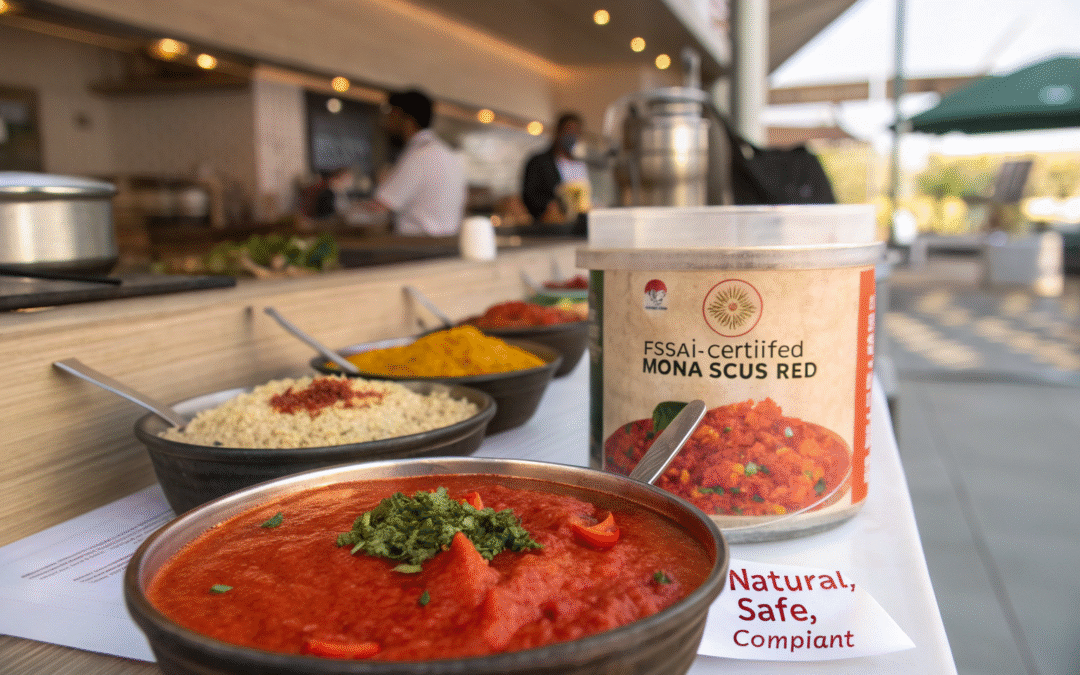

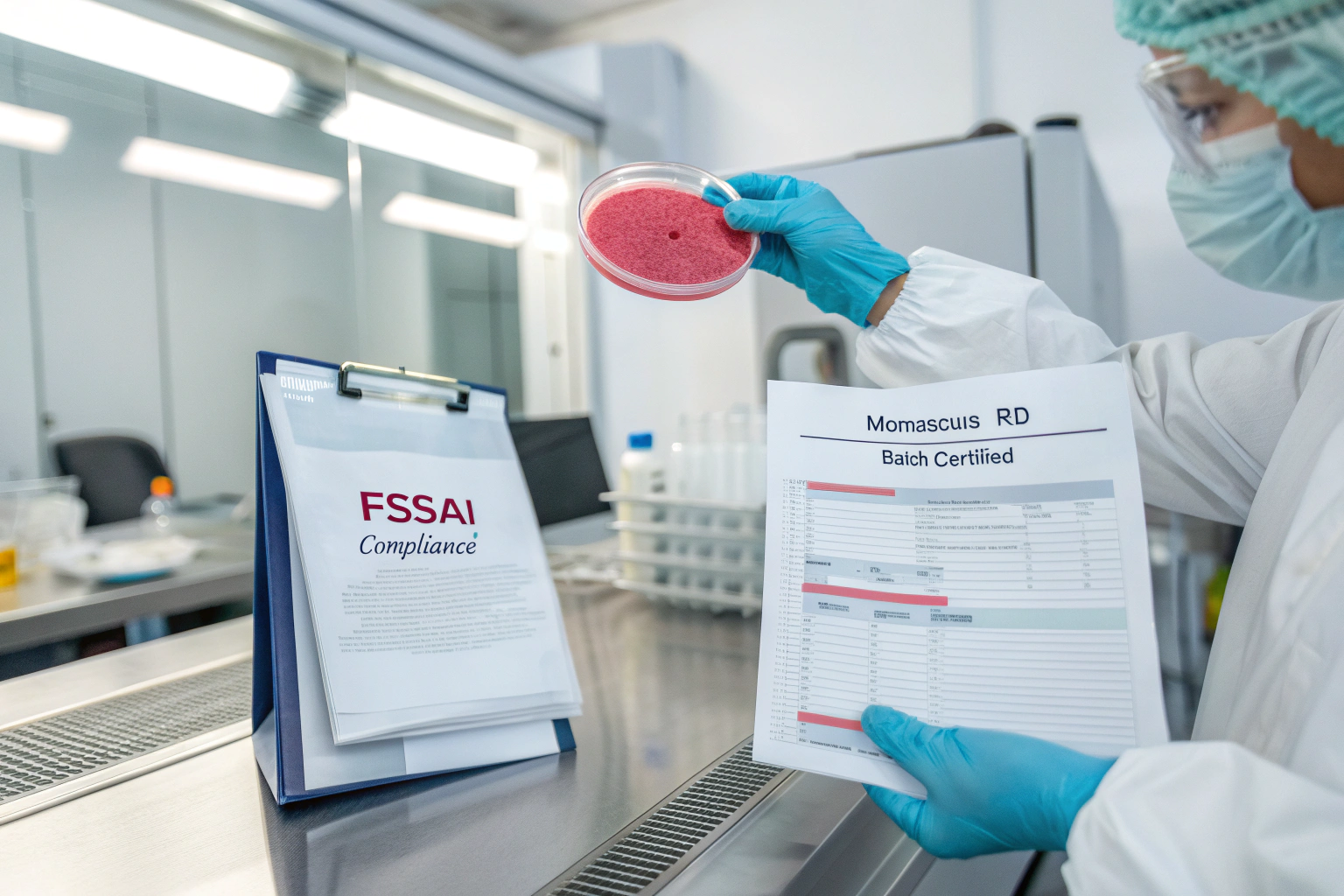
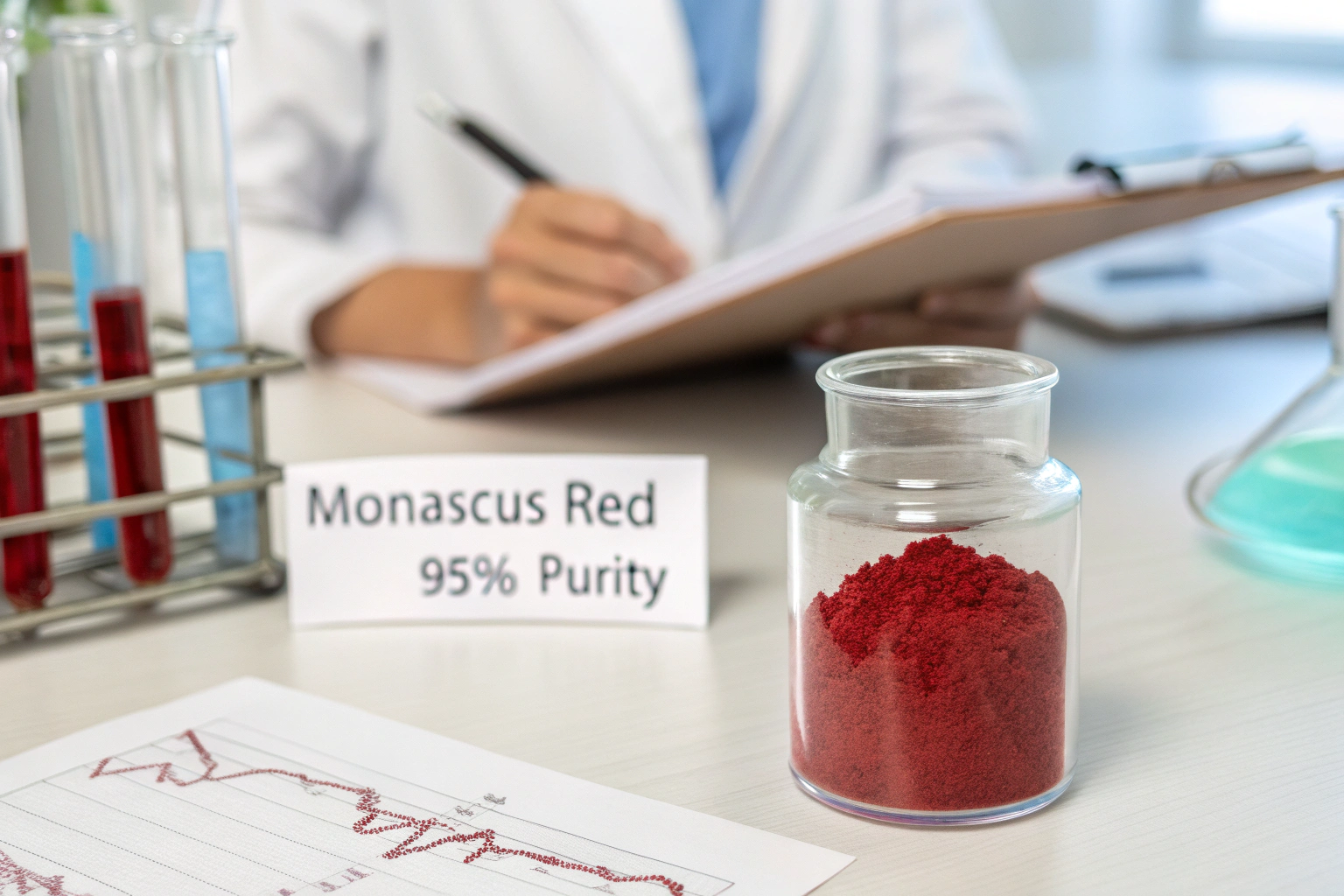
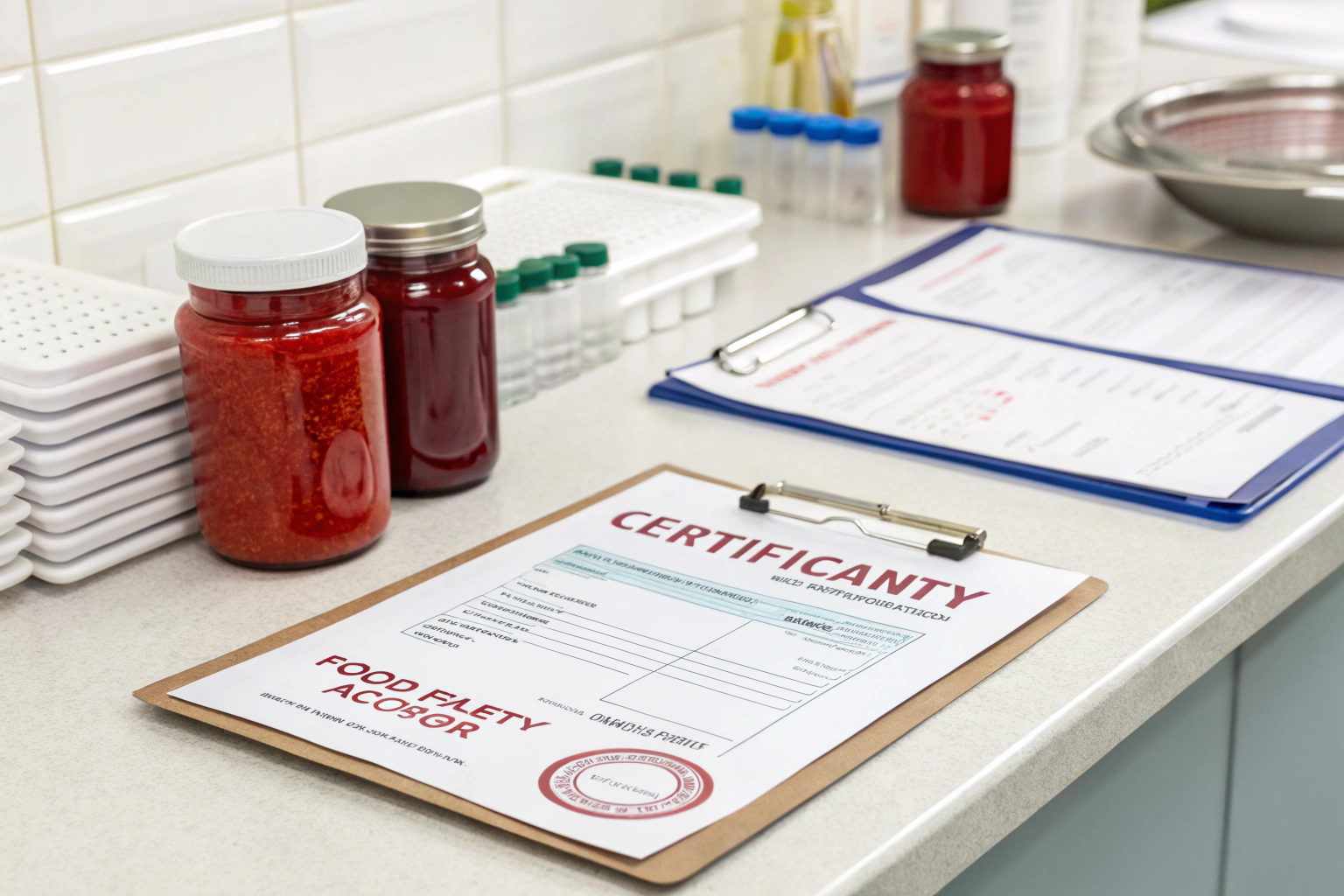
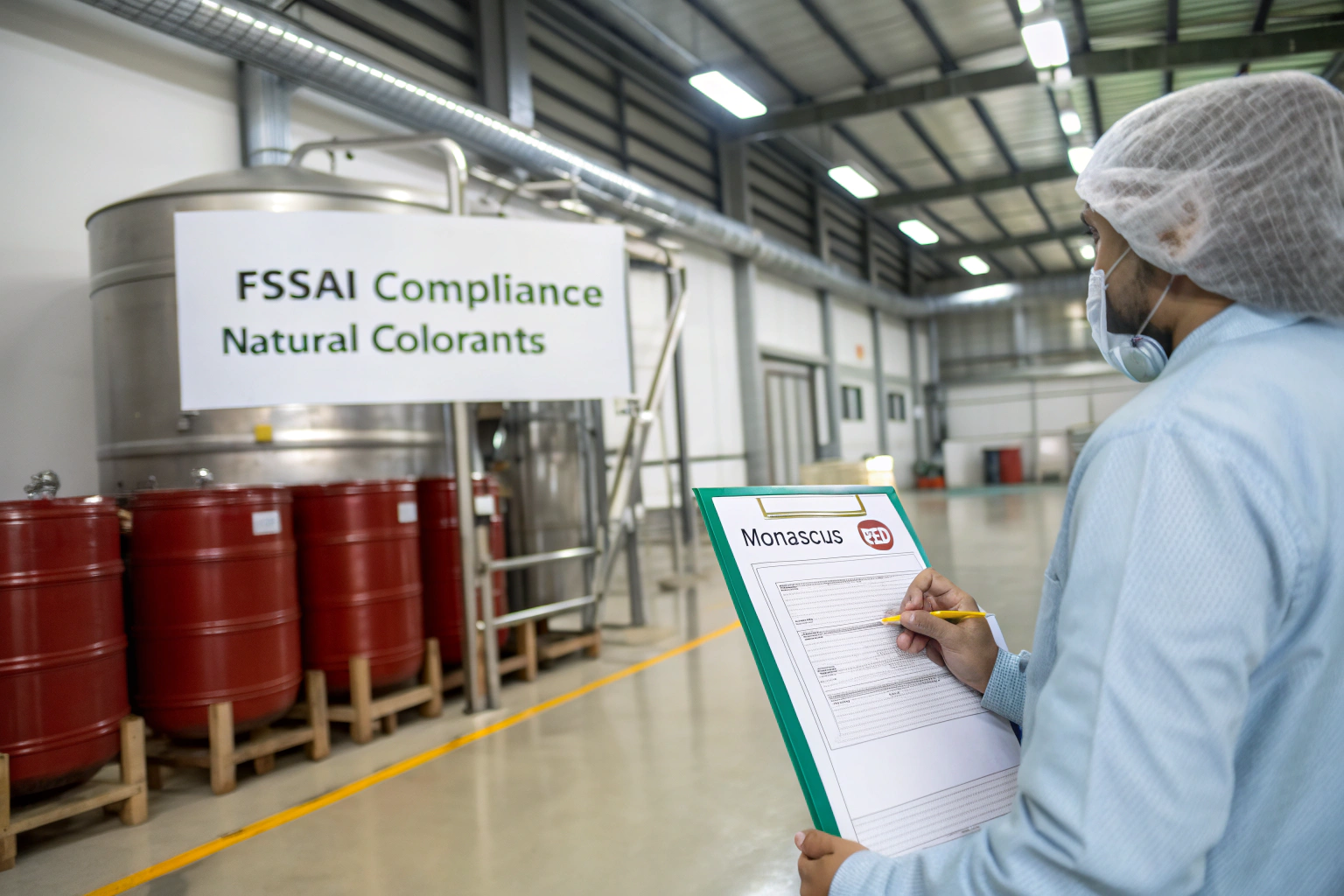

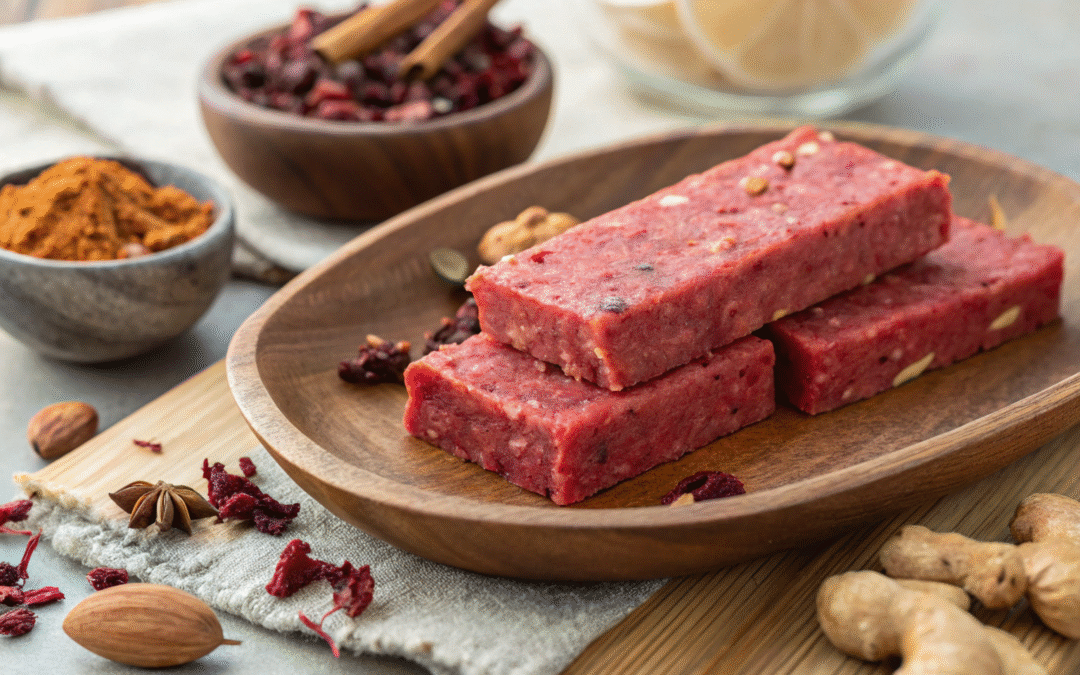
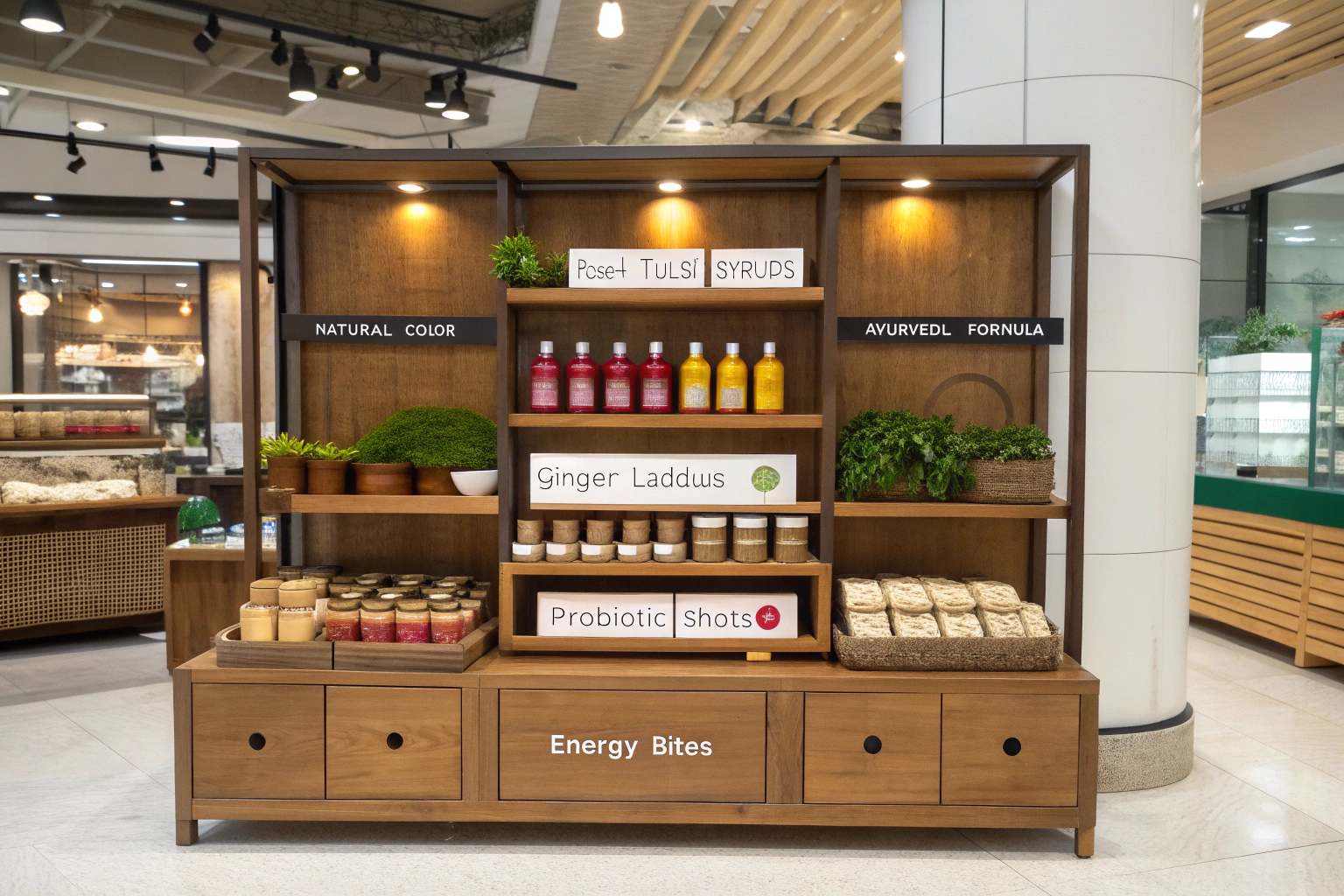
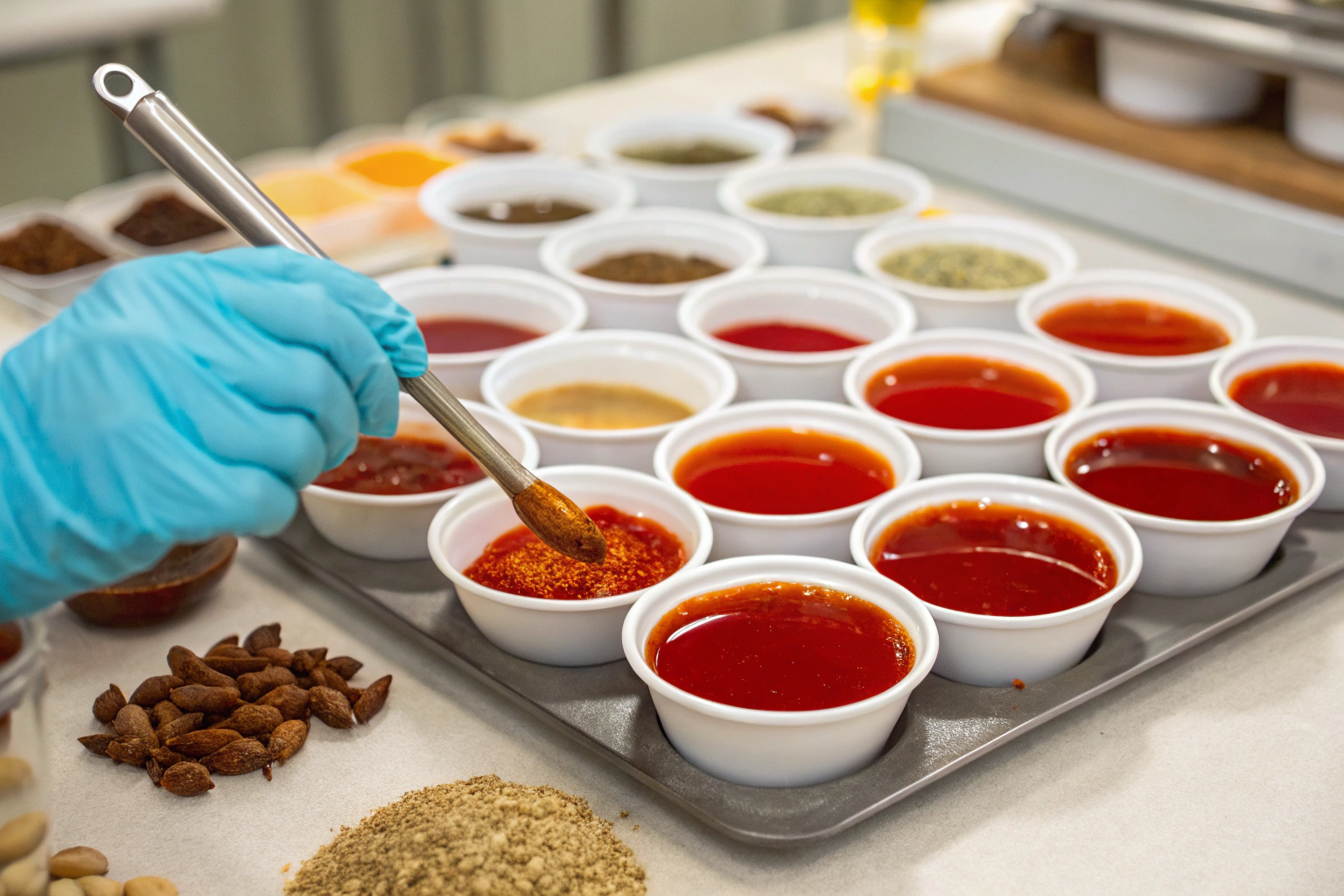
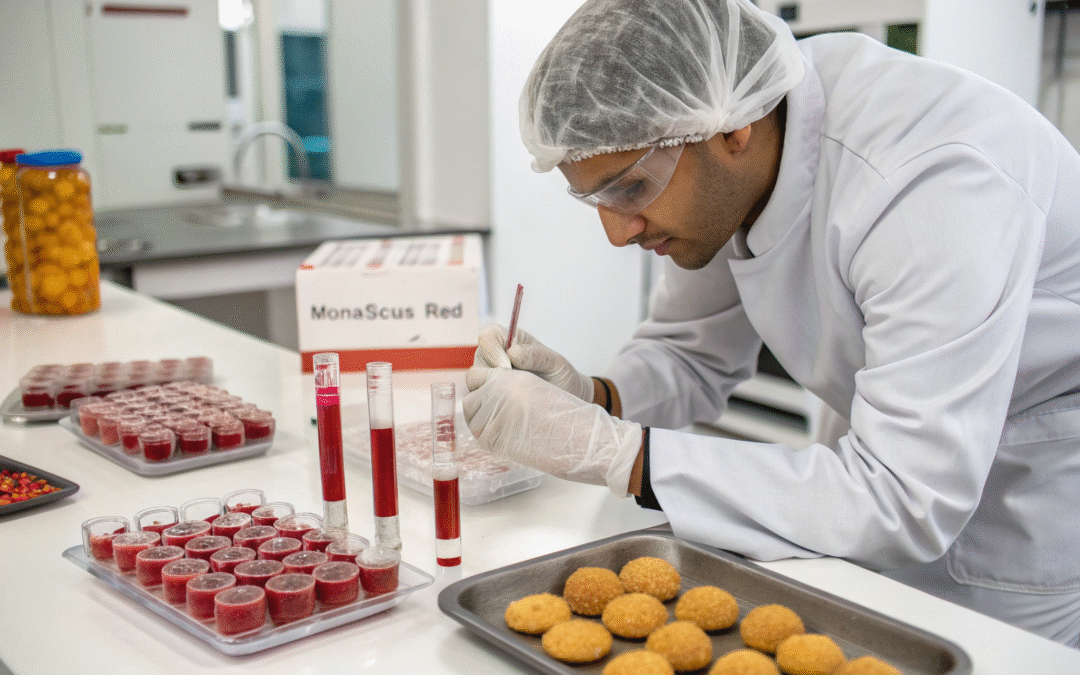
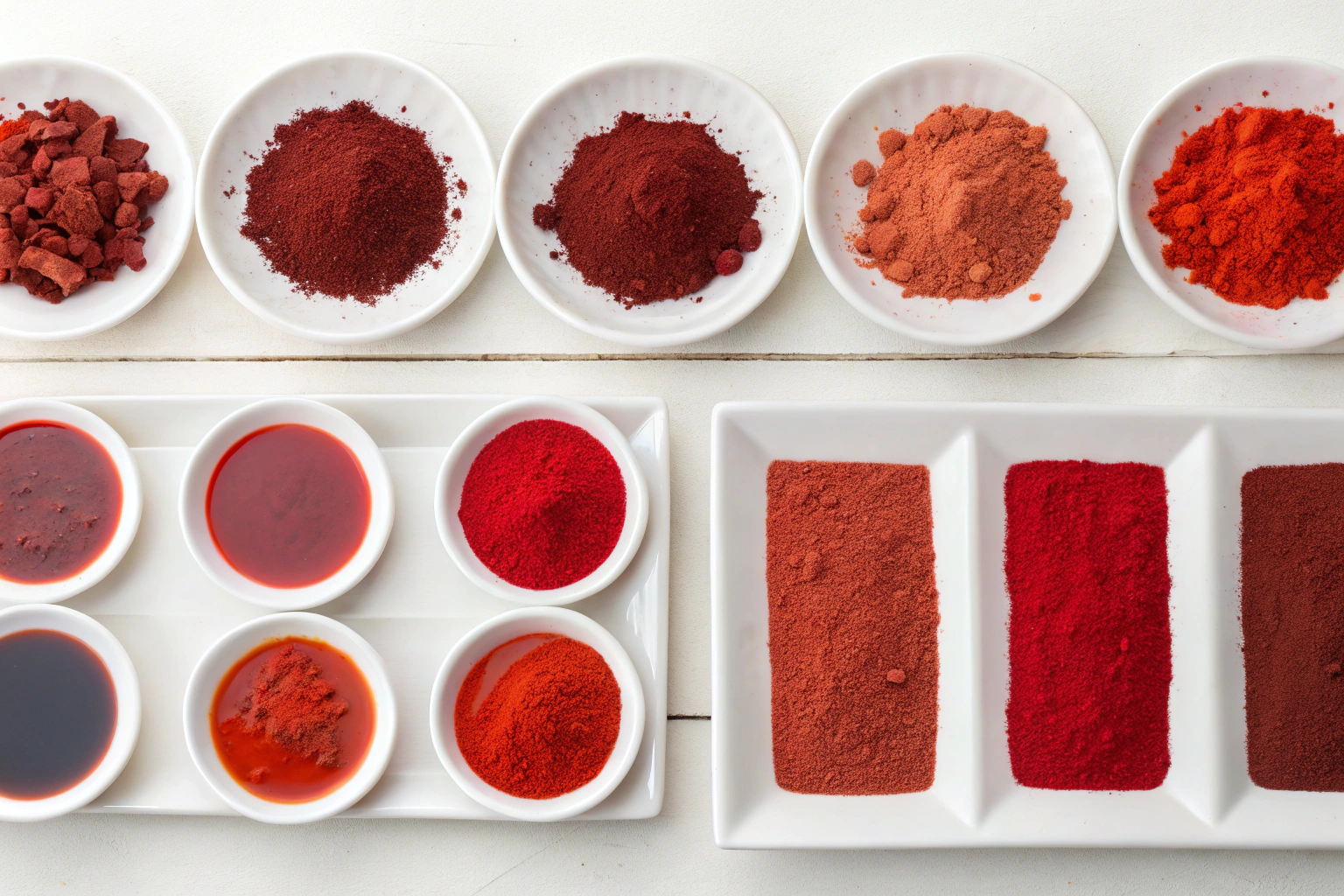
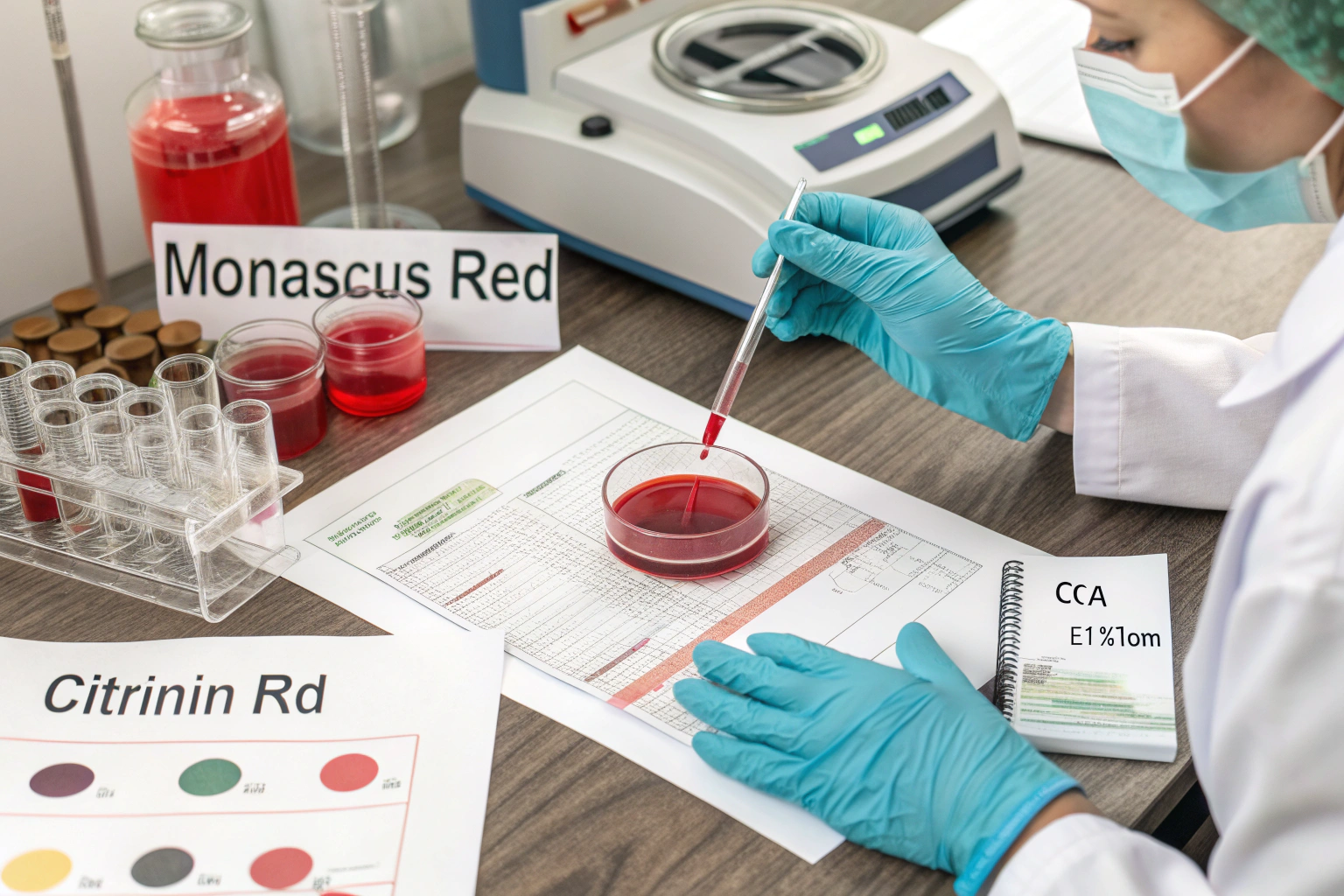
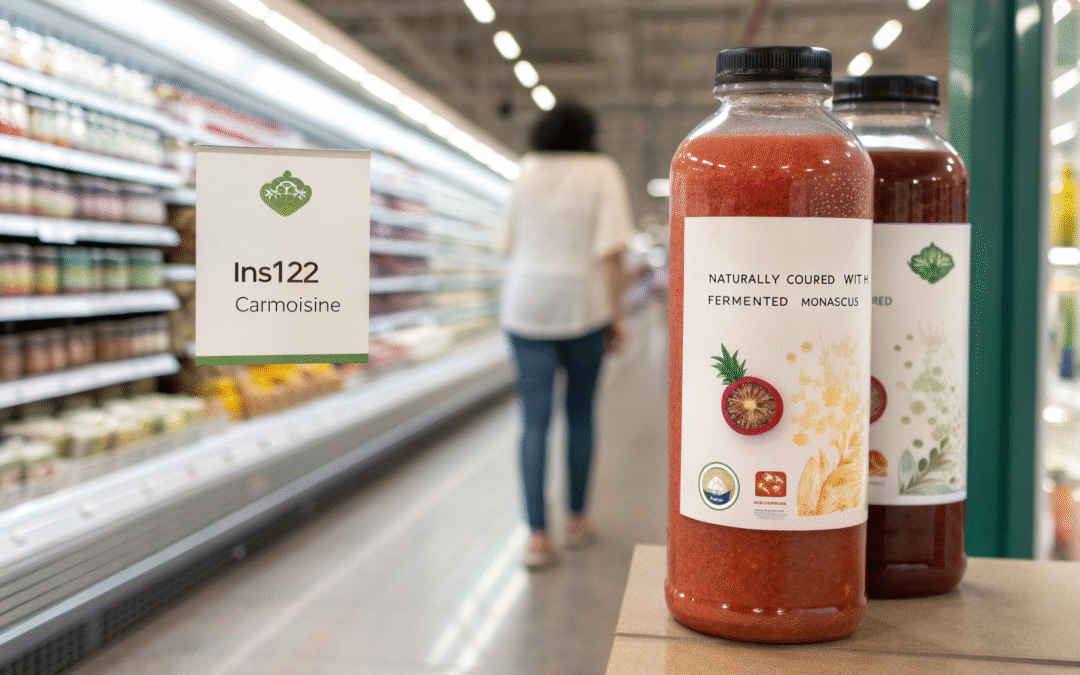

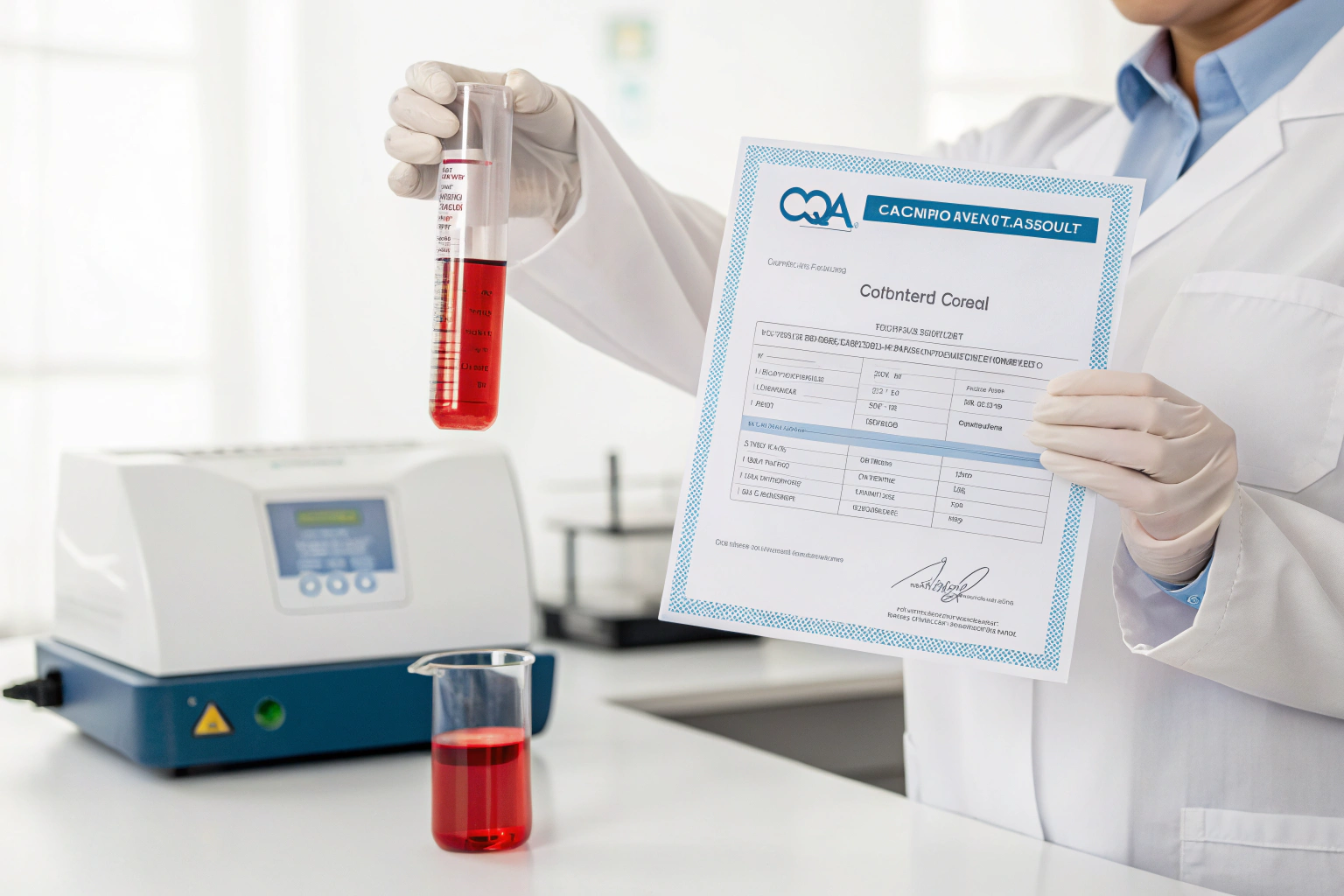
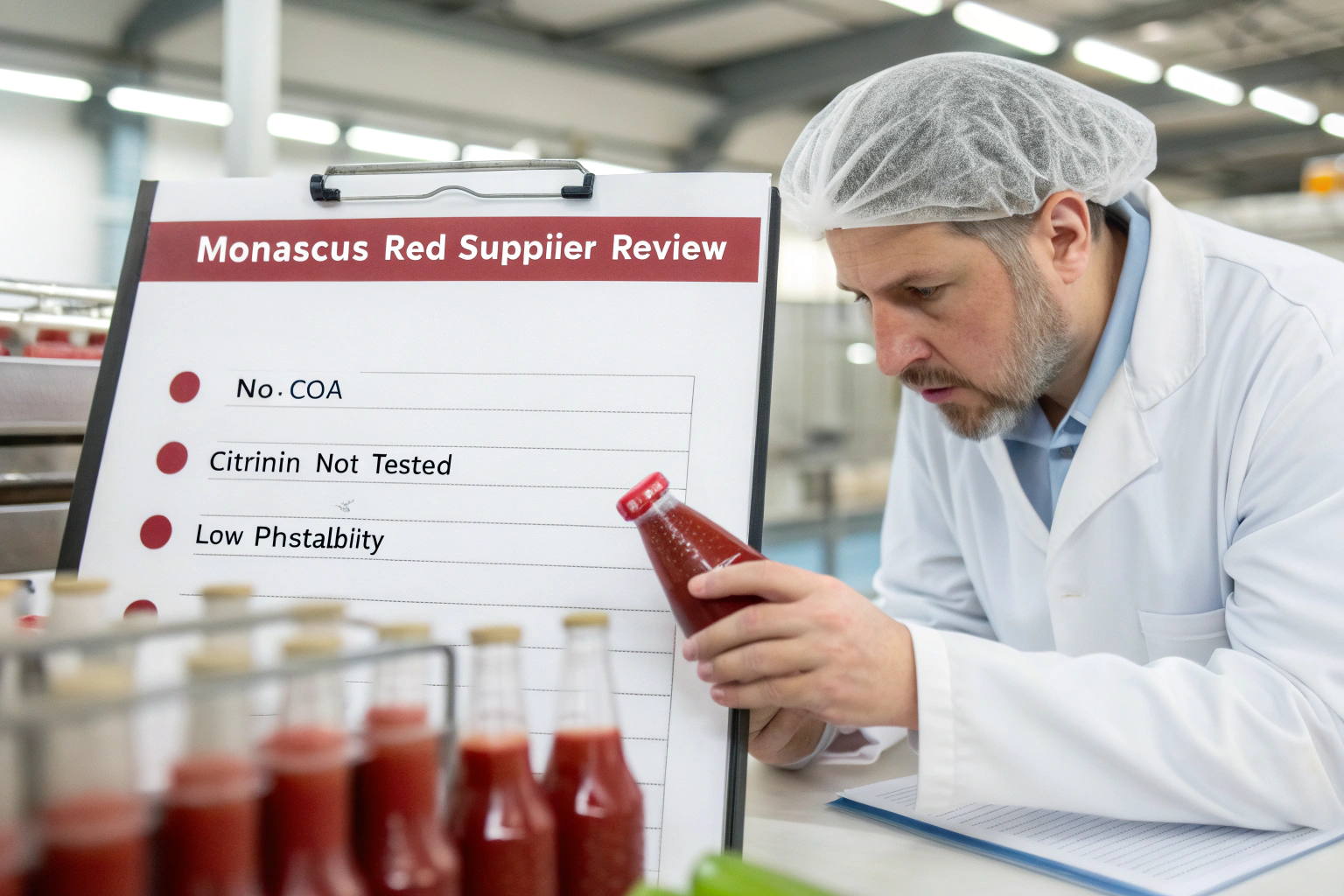
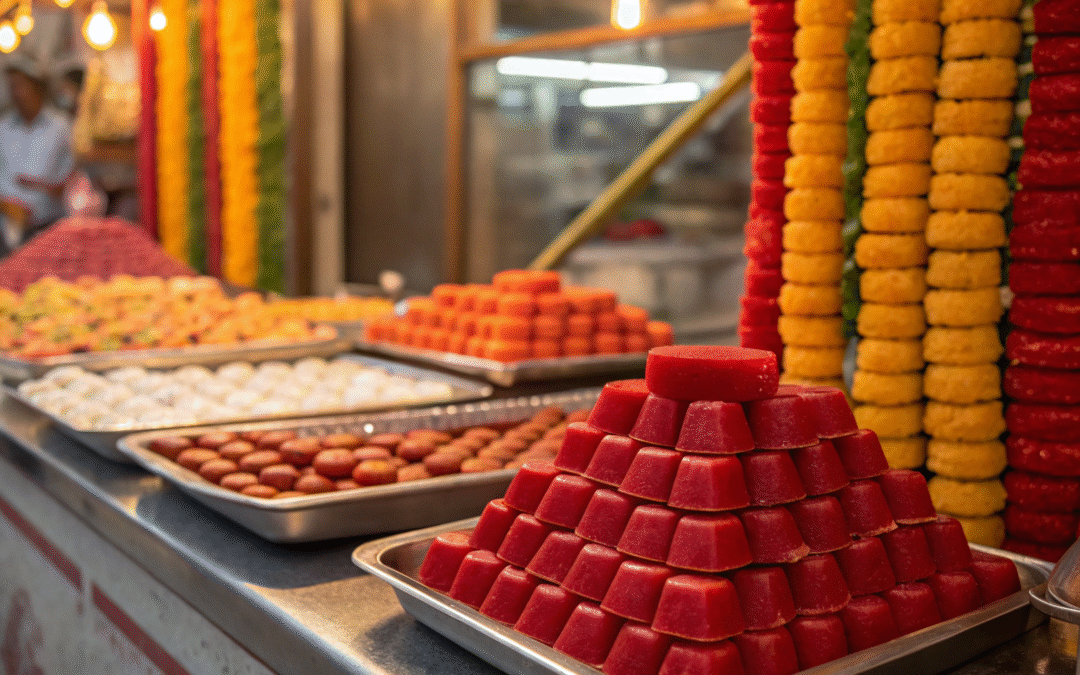

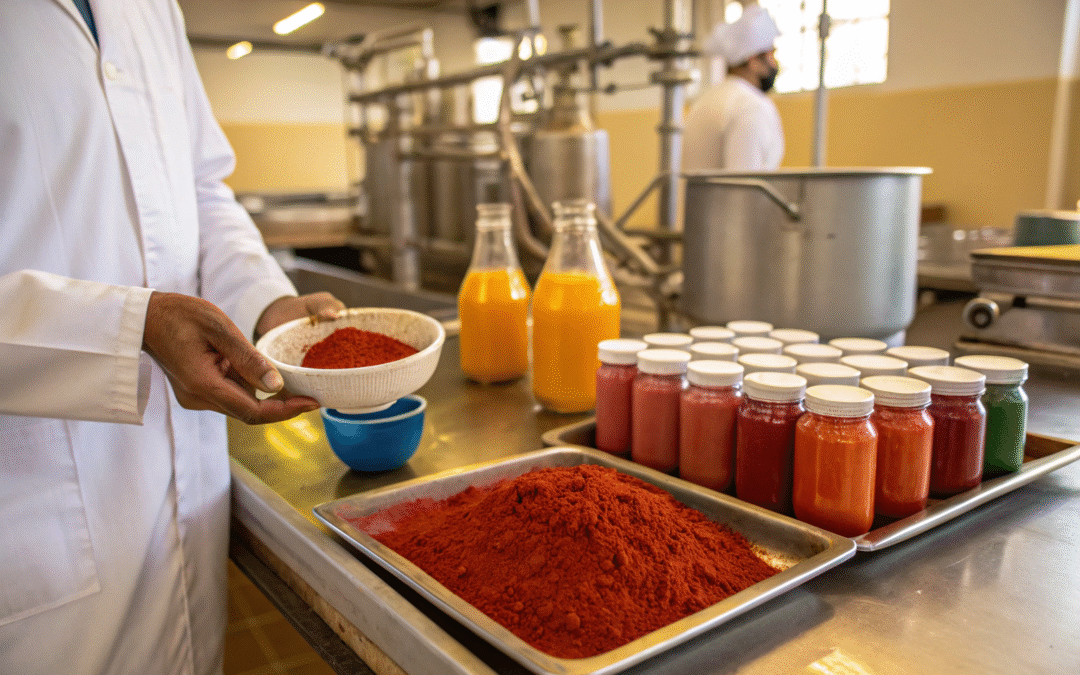
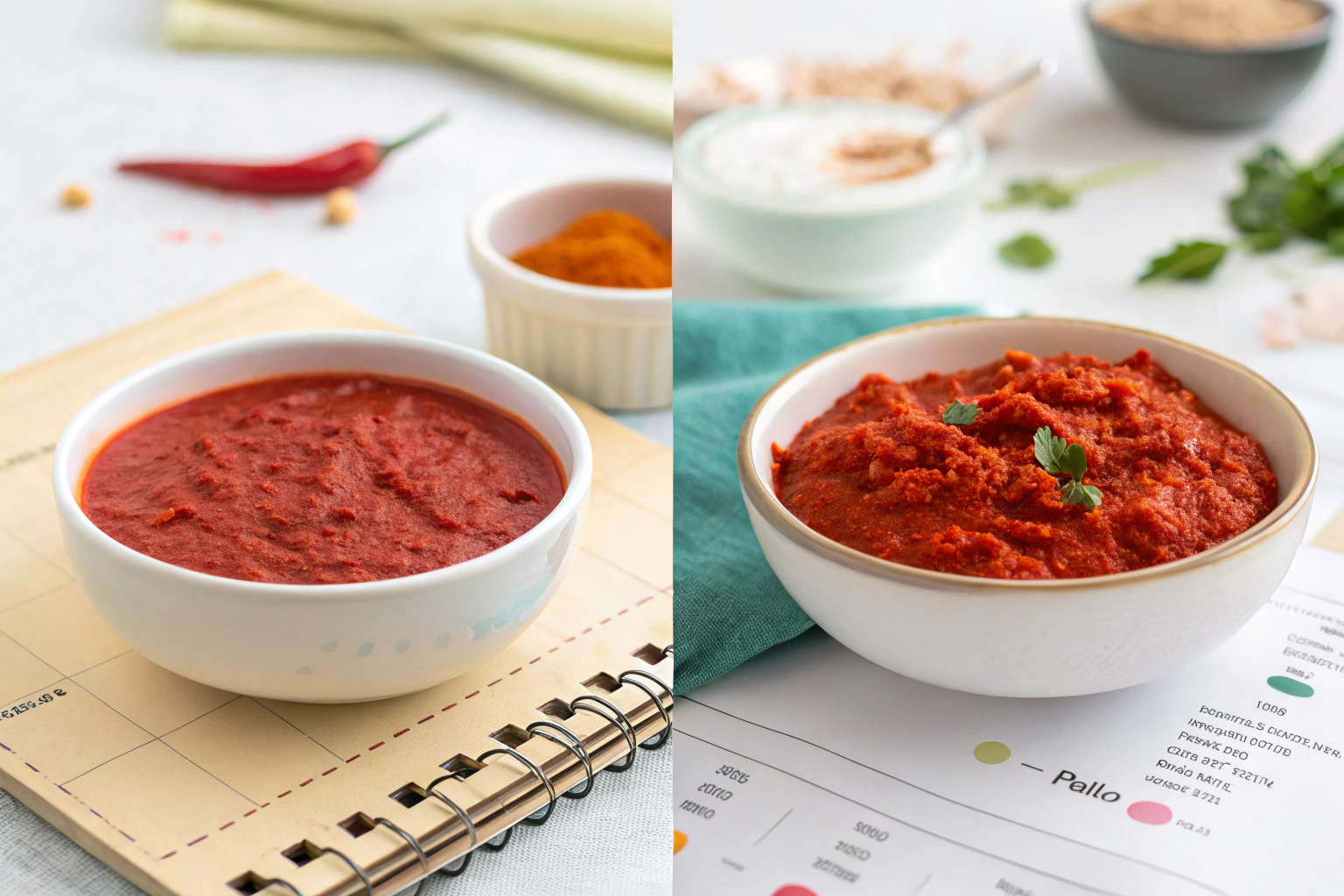
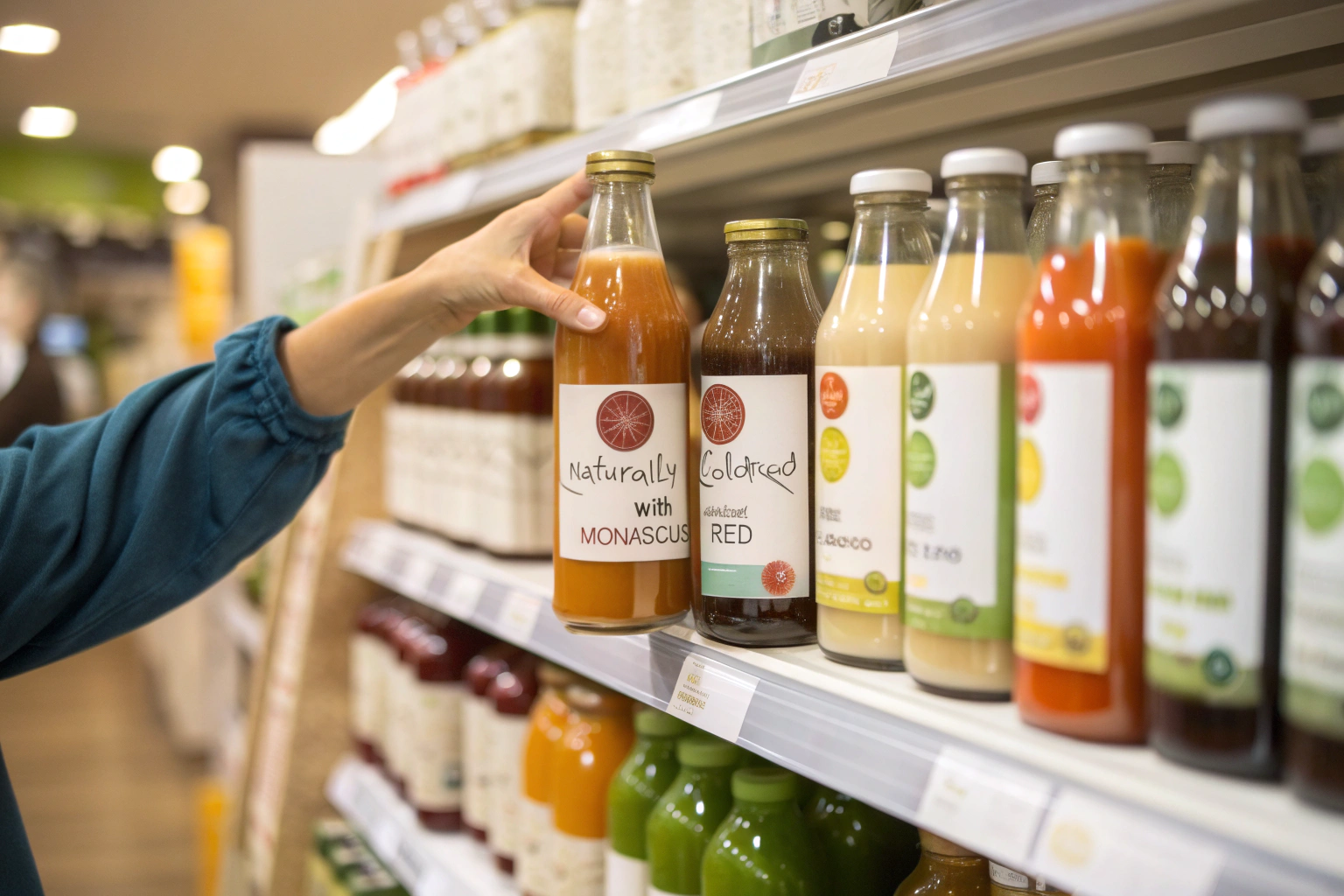
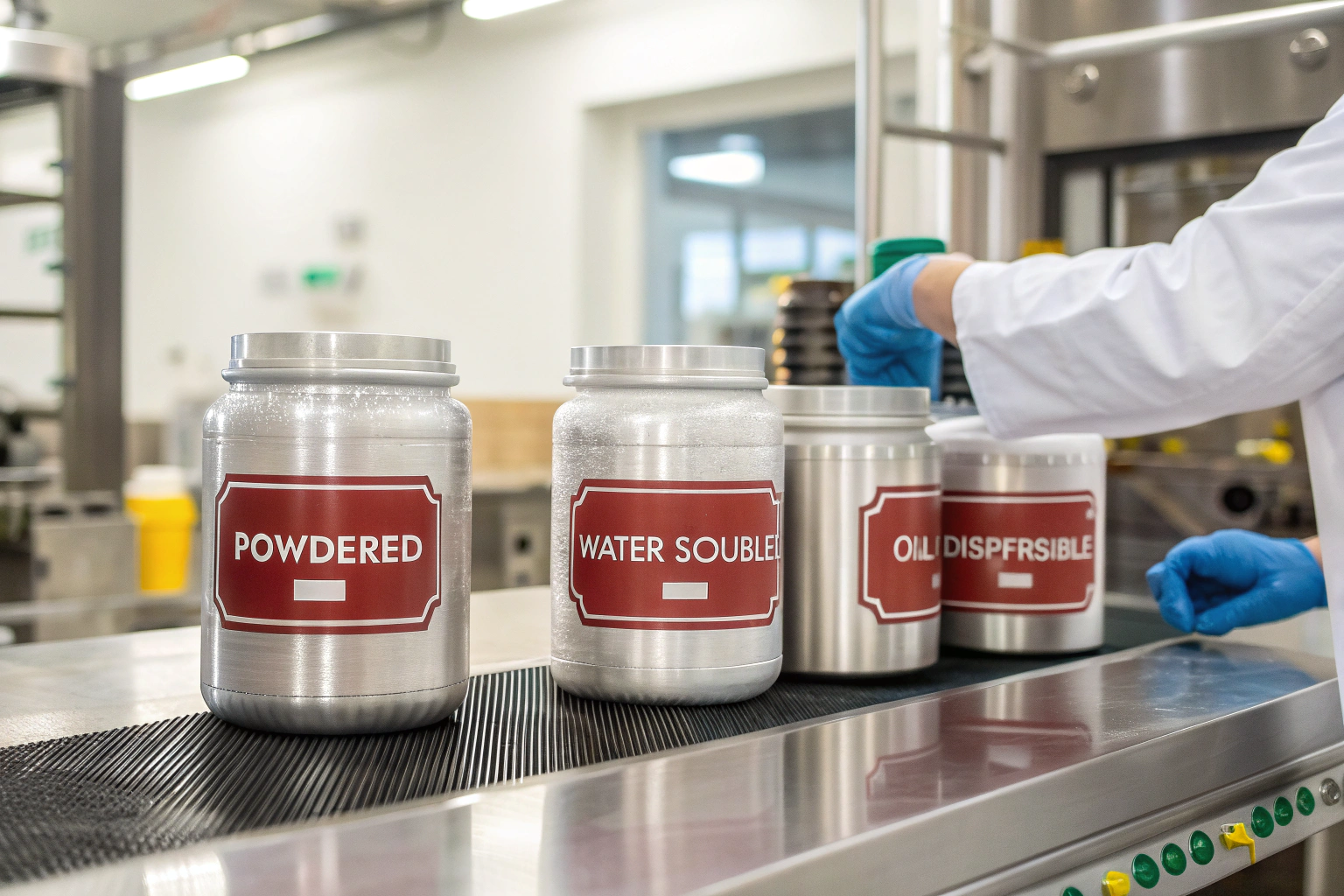

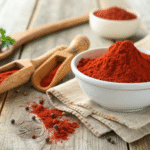
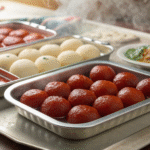
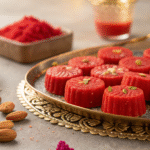

Recent Comments